Hyundai Ioniq 5 Vs. Kia EV6: What’s Really the Difference Between the Two?

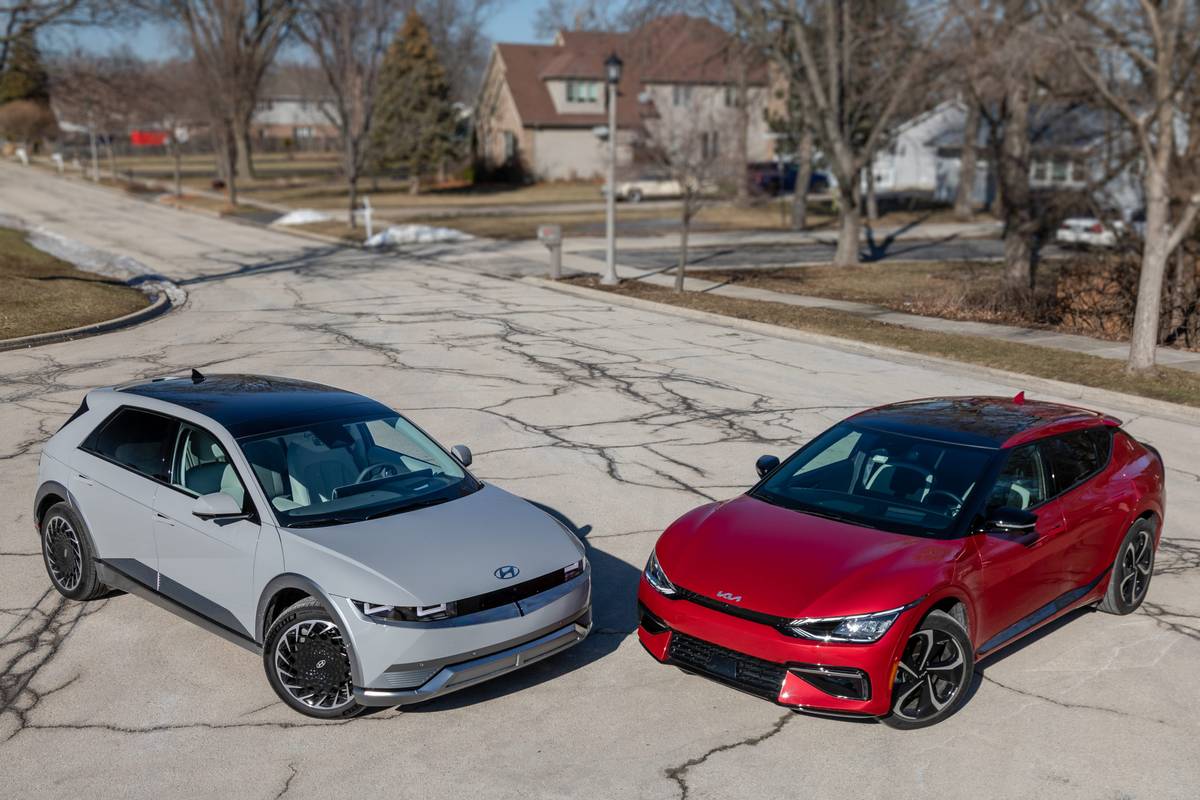
After many years of pretending they’ve never heard of each other, South Korean brands Hyundai and Kia have more recently begun to acknowledge their shared manufacturing parentage, possibly because they’ve both overcome their modest roots and are building excellent vehicles and enjoying success in the U.S. market. The latest examples are the all-new 2022 Hyundai Ioniq 5 and 2022 Kia EV6 electric vehicles, which share a platform called the Electric-Global Modular Platform, or E-GMP. They share a lot both under the skin and in terms of functionality, but impressions of the differences seem to be superficial, so we’re laying out the true differences after our evaluations of both. They’re probably not what you expect.
One Battery Choice or Two
Despite what you might see on the EPA site (and some early Hyundai documents), the Ioniq 5 launches in the U.S. with just one battery: the 77.4-kilowatt-hour pack that provides an EPA-estimated 303 miles of range with rear-wheel drive or 256 miles with all-wheel drive. The EV6 ostensibly includes a base trim level, the Light, equipped with a 58-kWh battery pack and rear-drive only for an EPA-estimated 232 miles of range. The higher trims, Wind and GT-Line, come with the larger pack and are rated at 310 and 274 miles of range for RWD and AWD, respectively. The Kia’s longer range seems to come from higher overall efficiency, as reflected in its mpg-equivalent ratings.
Starting Price
In today’s market, MSRP means only so much, as the inventory shortage has raised market pricing and limited choices, but as mentioned above, the EV6 theoretically includes a rear-drive Light trim level with a smaller battery pack that would represent a full $2,780 lower entry price (including destination charges) than the Ioniq 5, but none of this trim appear in Cars.com inventory as of March 2022.
Sporty Vs. Not Sporty … Looking
The Hyundai is utilitarian and the Kia is sporty, right? Maybe if all you do is look at them. We had the same impression as well until we actually drove both. The EV6 has a wheelbase of 114.2 inches, which is about 4 inches shorter than the Ioniq 5’s, and is 2.2 inches lower at the roofline — but it’s actually almost 2 inches longer from bumper to bumper. We thought the Ioniq 5 and EV6 GT-Line, both equipped with 20-inch wheels, drove quite similarly and not very sportily unless your sole criterion for sport is quick acceleration, which both delivered. Both ride comfortably overall, and that’s a good thing in this class.
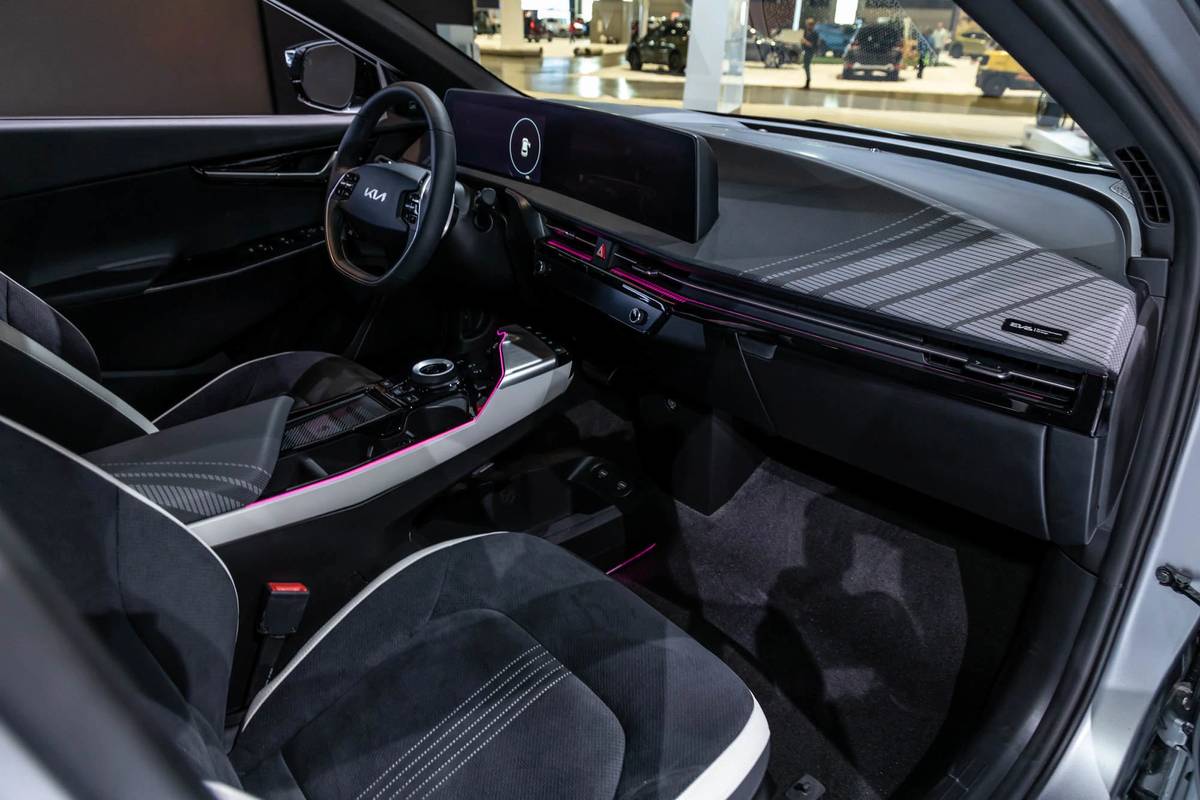
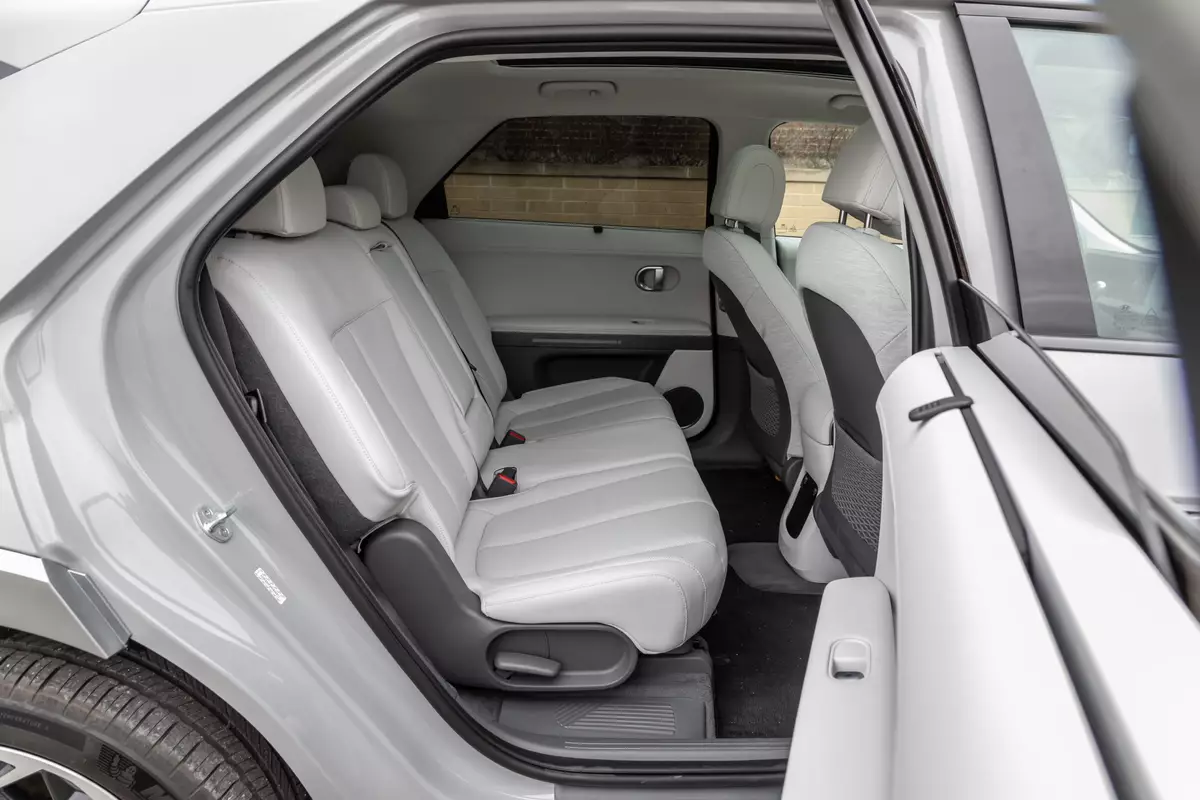
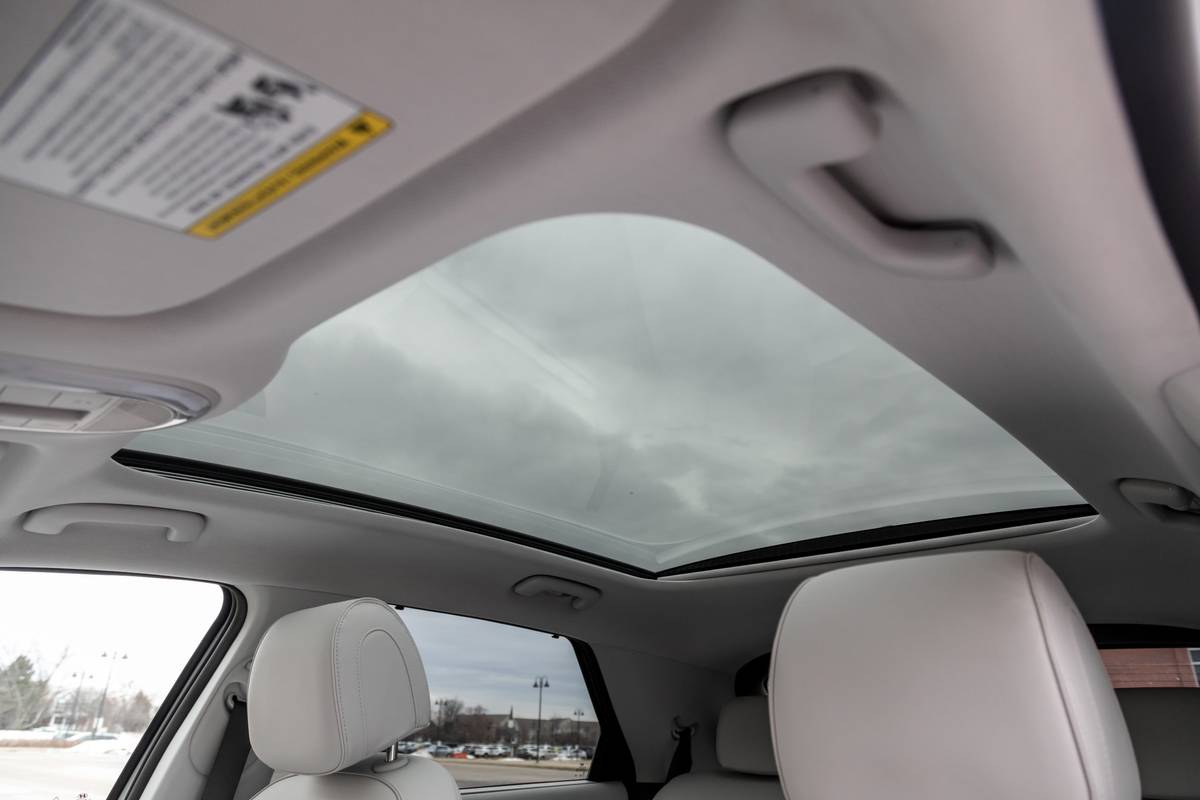
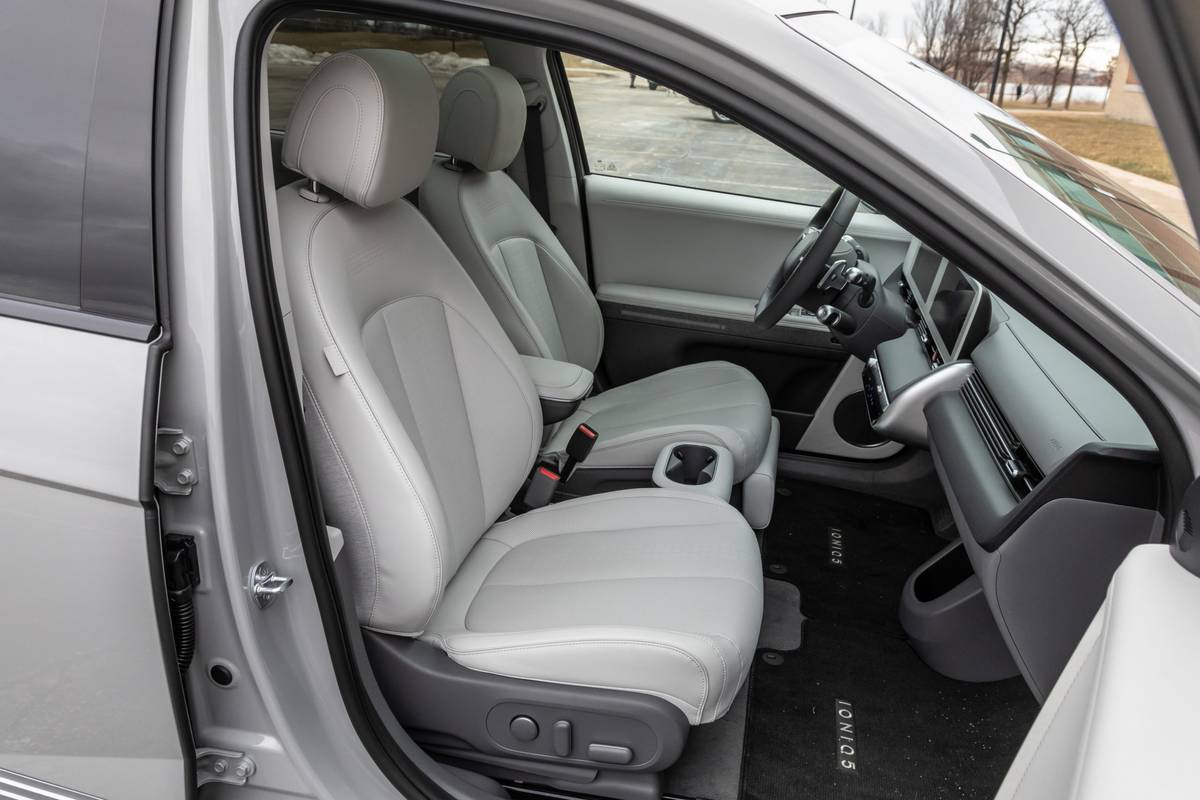
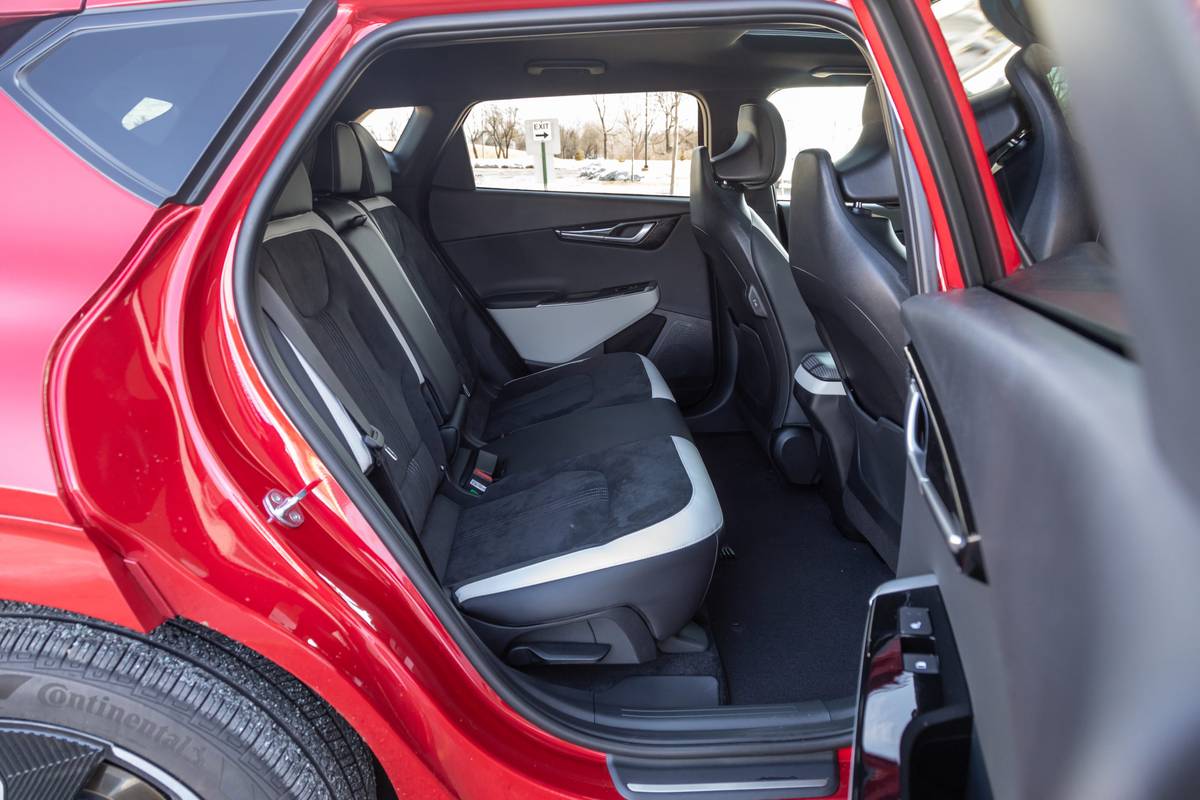
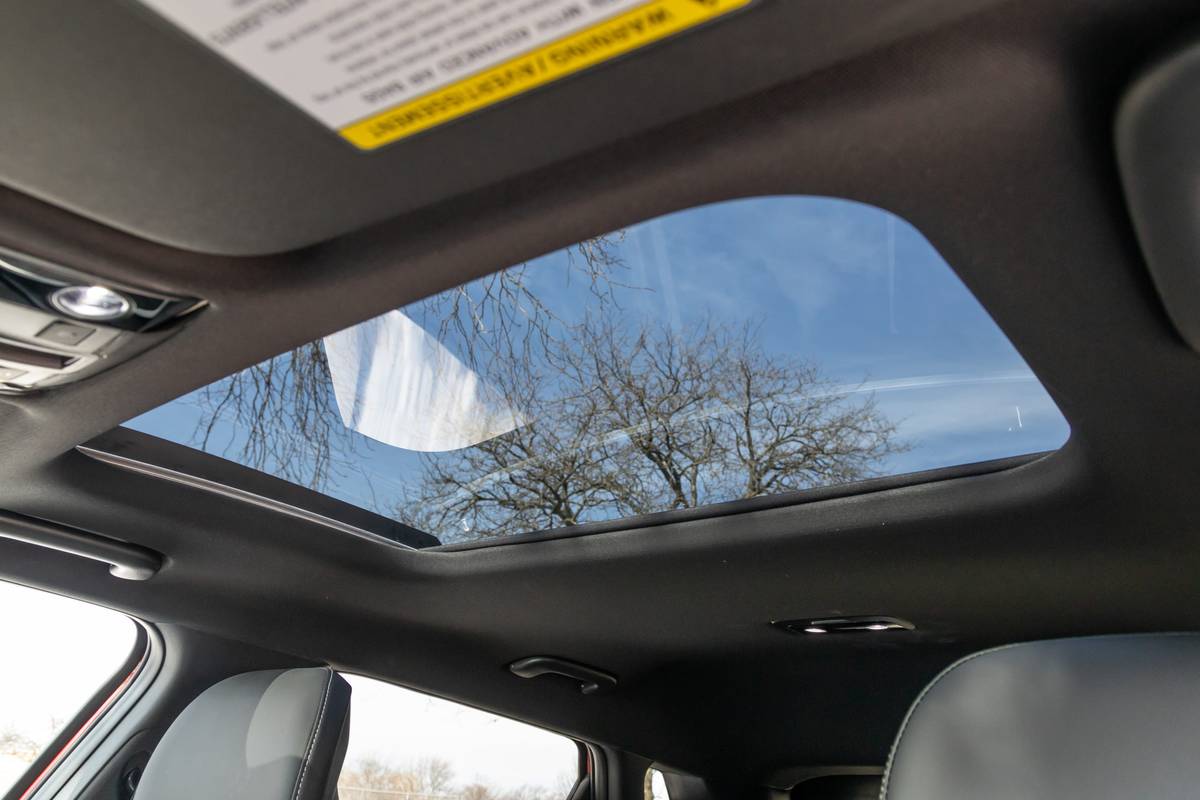






Comfy Vs. Awkward
By the supplied numbers, the EV6 has 0.7 inch more front legroom than the Ioniq 5. But its front headroom, 39 inches, is 0.8 inches less than the Ioniq 5’s. Our taller editors complained about everything from banging their heads upon entry to brushing the grab handle the whole time they drove. Note that the standard moonroof on the GT-Line robs 2.2 inches from the front occupants, so doing without that feature (and the others you sacrifice on lower trim levels) would essentially achieve headroom parity with the Ioniq 5 but presumably wouldn’t affect the incidence of braining oneself upon ingress. (The Ioniq 5 Limited’s panoramic fixed-glass moonroof doesn’t appear to alter the headroom versus lower trims, likely because it doesn’t tilt, slide and open like the Kia’s.)
Related: Do the 2022 Hyundai Ioniq 5 and Kia EV6 Really Have Faster Charging Times Than Other EVs?
Specifications don’t always do a great job of representing three-dimensional space, as is the case for the EV6 in which the seats are very close to the floor to compensate for the lower roofline. Our 6-foot-tall drivers found themselves trapped between two unpleasant options: feeling like they were sitting on the floor where the steering wheel blocked the instrument panel or raising the seat and encountering the limited headroom. By the numbers, the backseat has only 0.4 inch less legroom than the Ioniq 5 but the seat is low, which raises passengers’ knees.
Child-Safety Seat Latch Anchors
If you intend to install car seats for your kids, both of these models are very good, but where the EV6 earned straight A’s in our Car Seat Check, the Ioniq 5 got a pair of B grades because its lower Latch anchors were harder to access.
Turning Circle: Bad or Really Bad
The difference in turning diameter between these two models isn’t huge: 1.1 feet. But given how wide the Ioniq 5’s is — 39.3 feet — you might be desperate enough to choose the EV6 instead for that much relief. For comparison, the Volkswagen ID.4’s turning circle is as tight as 31.5 feet with RWD or 36.4 feet with AWD.

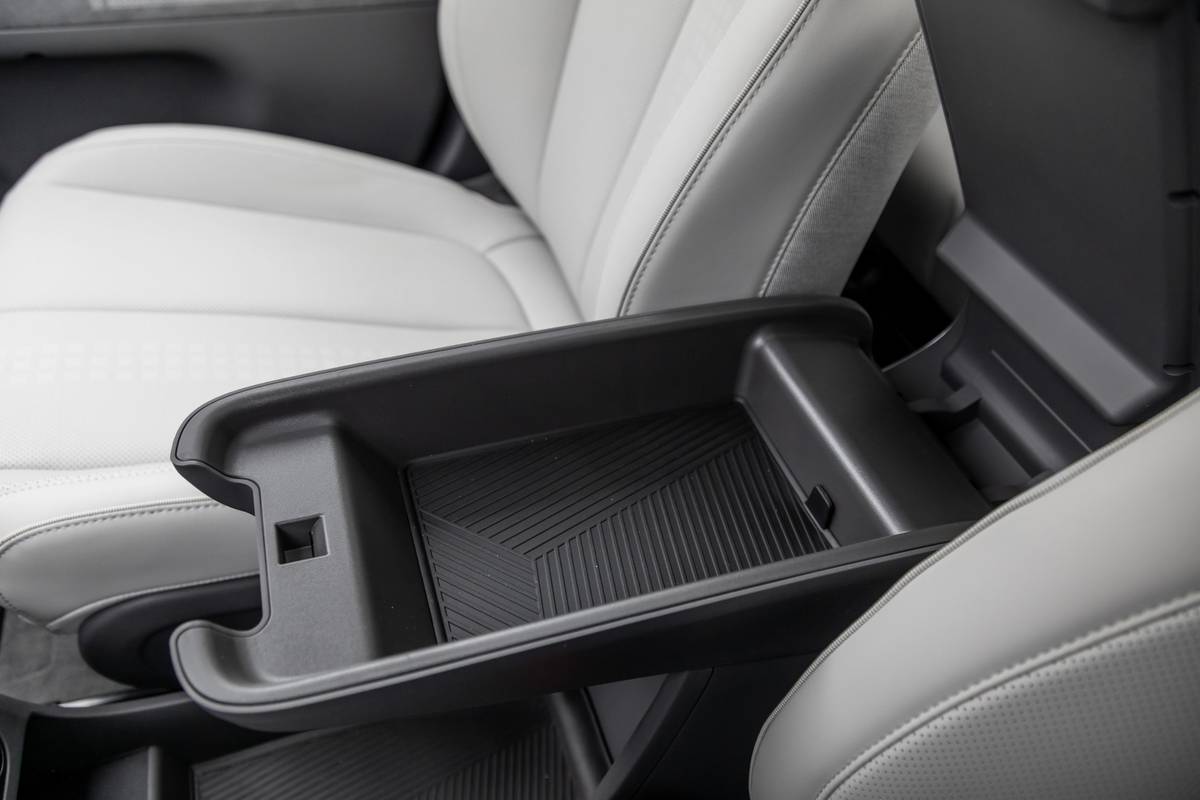
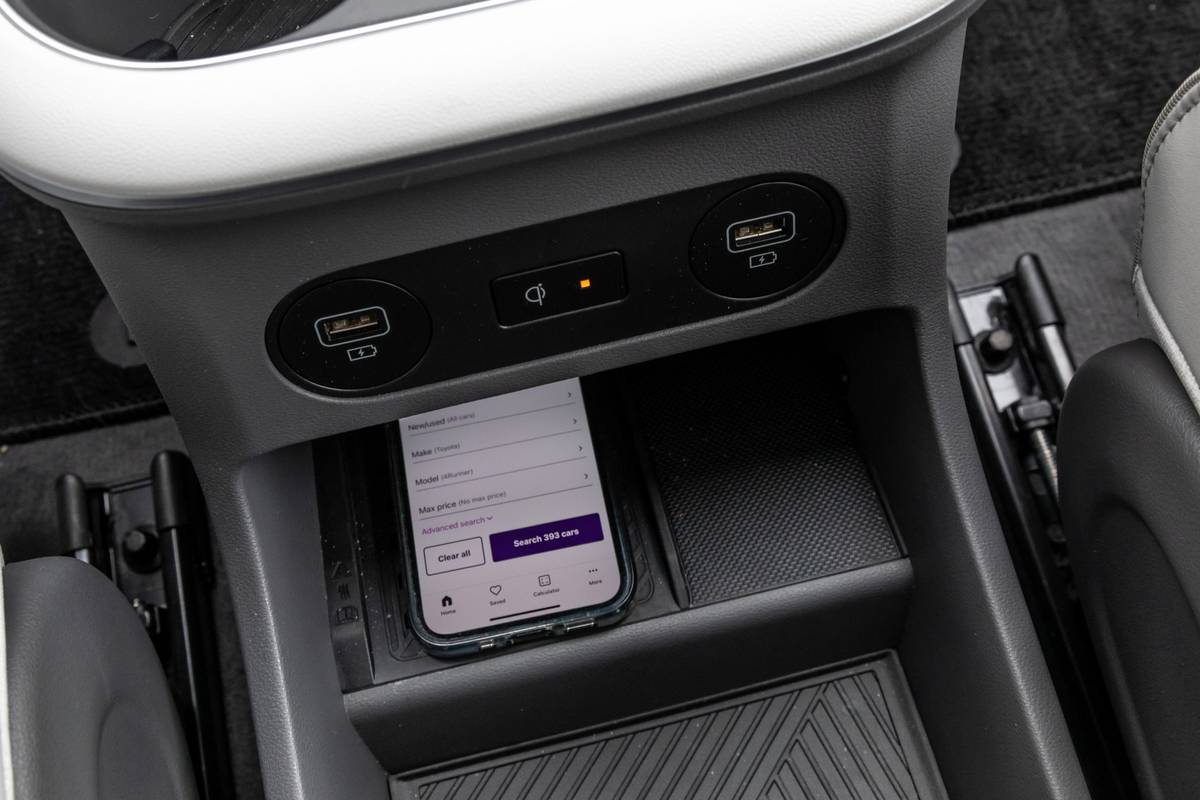
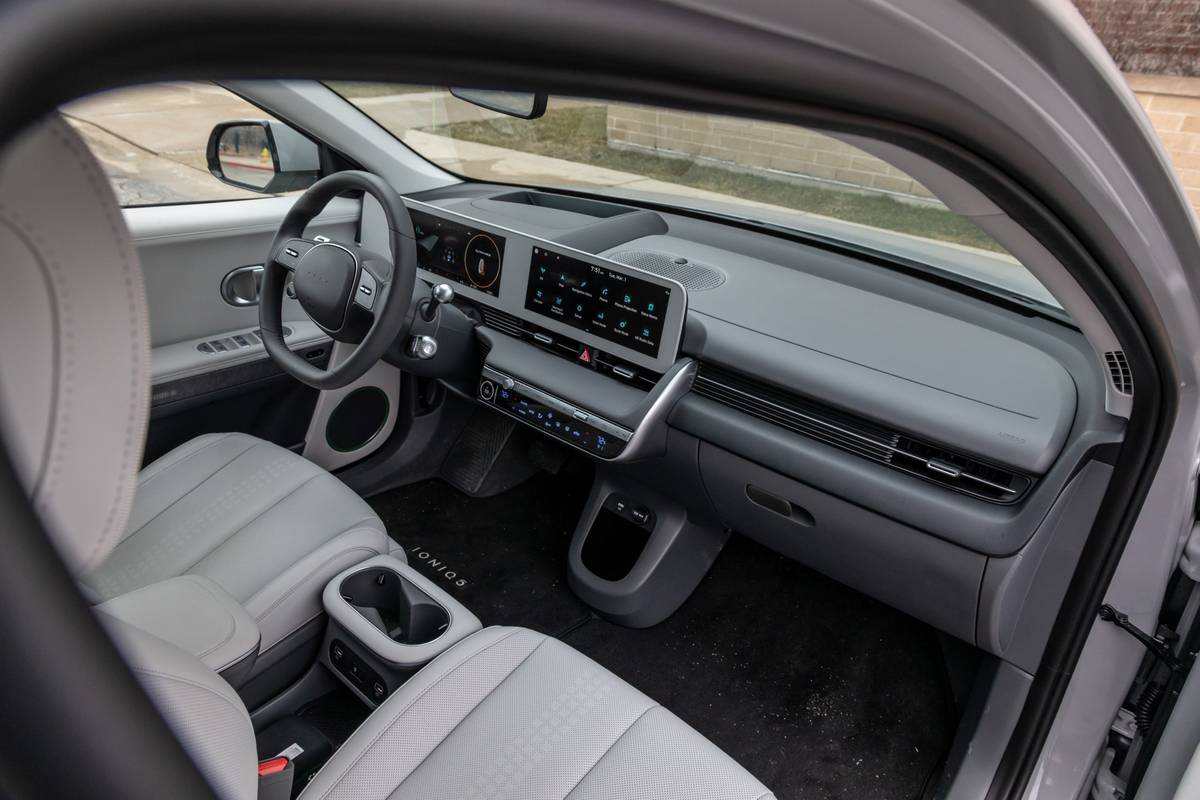
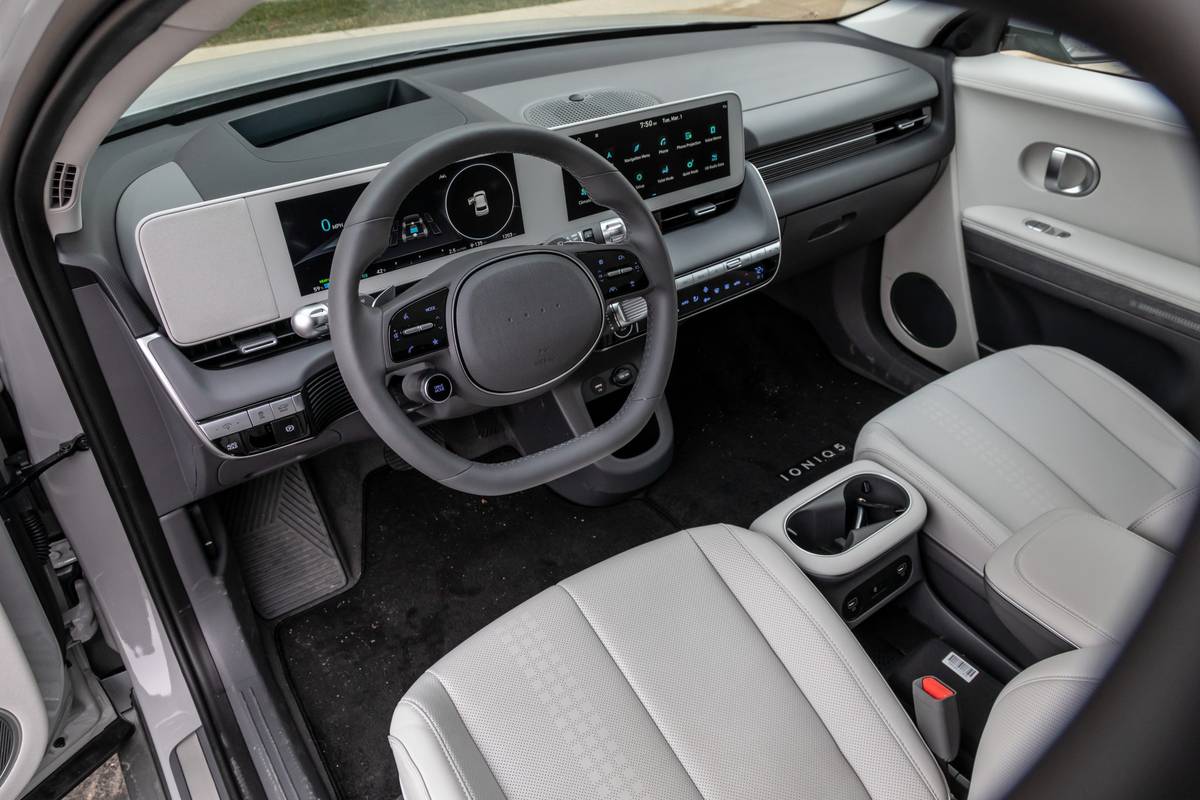
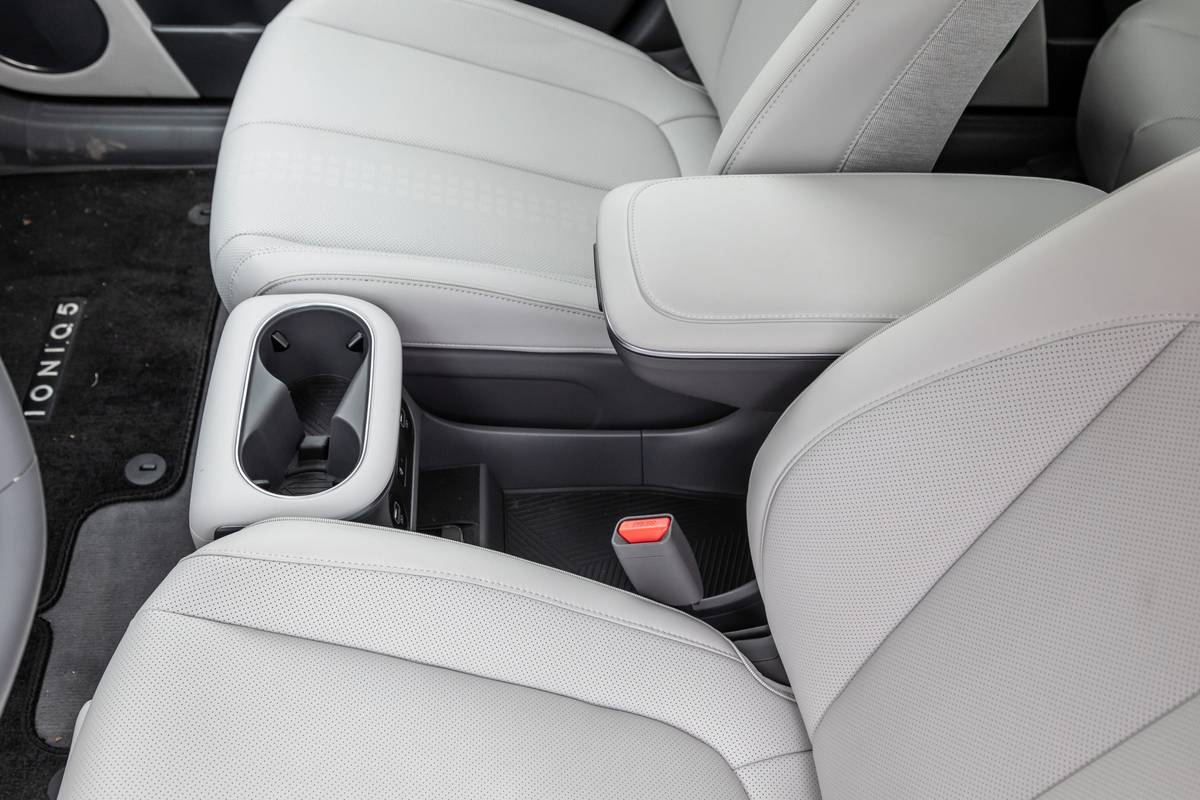
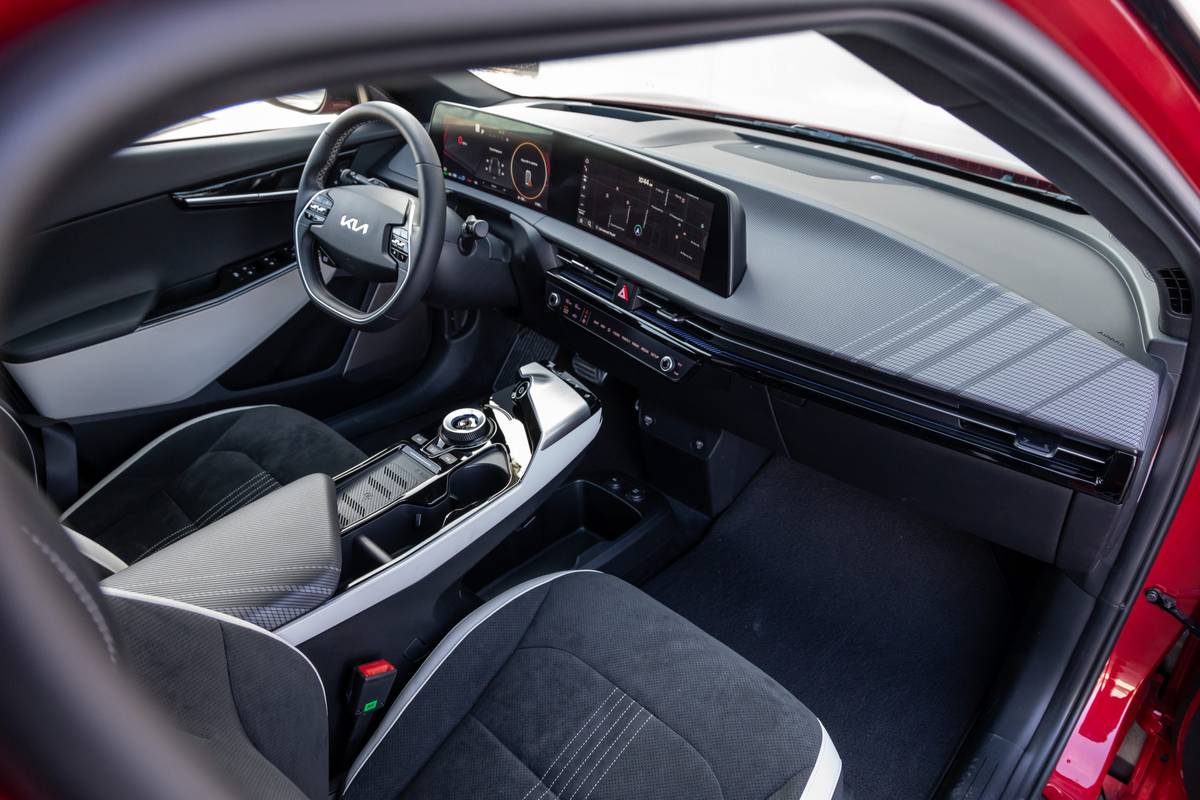
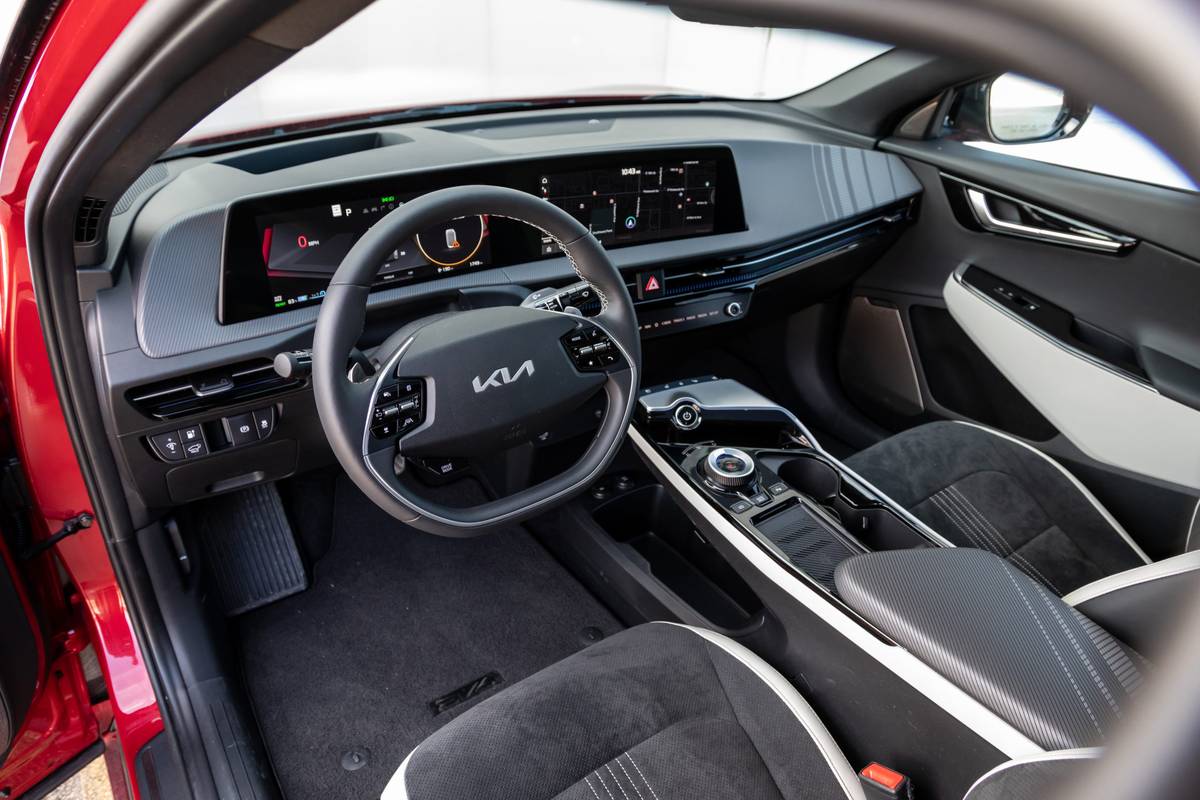
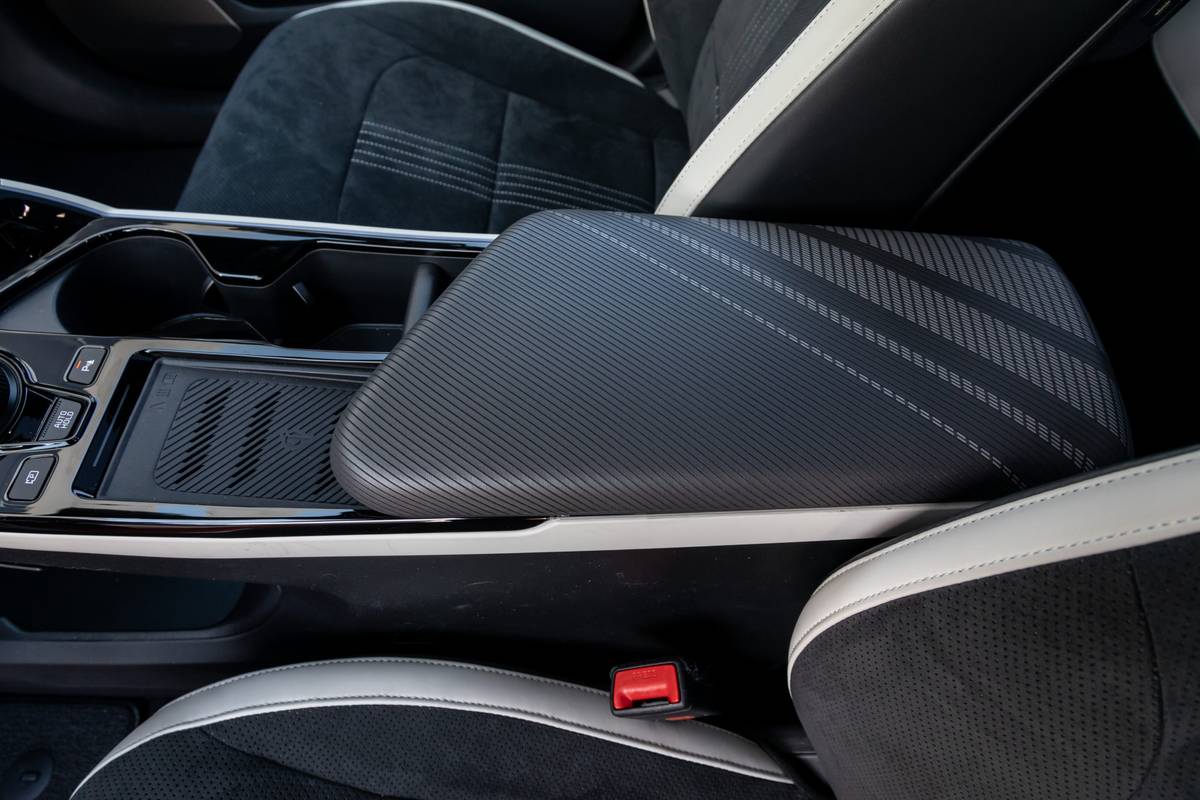
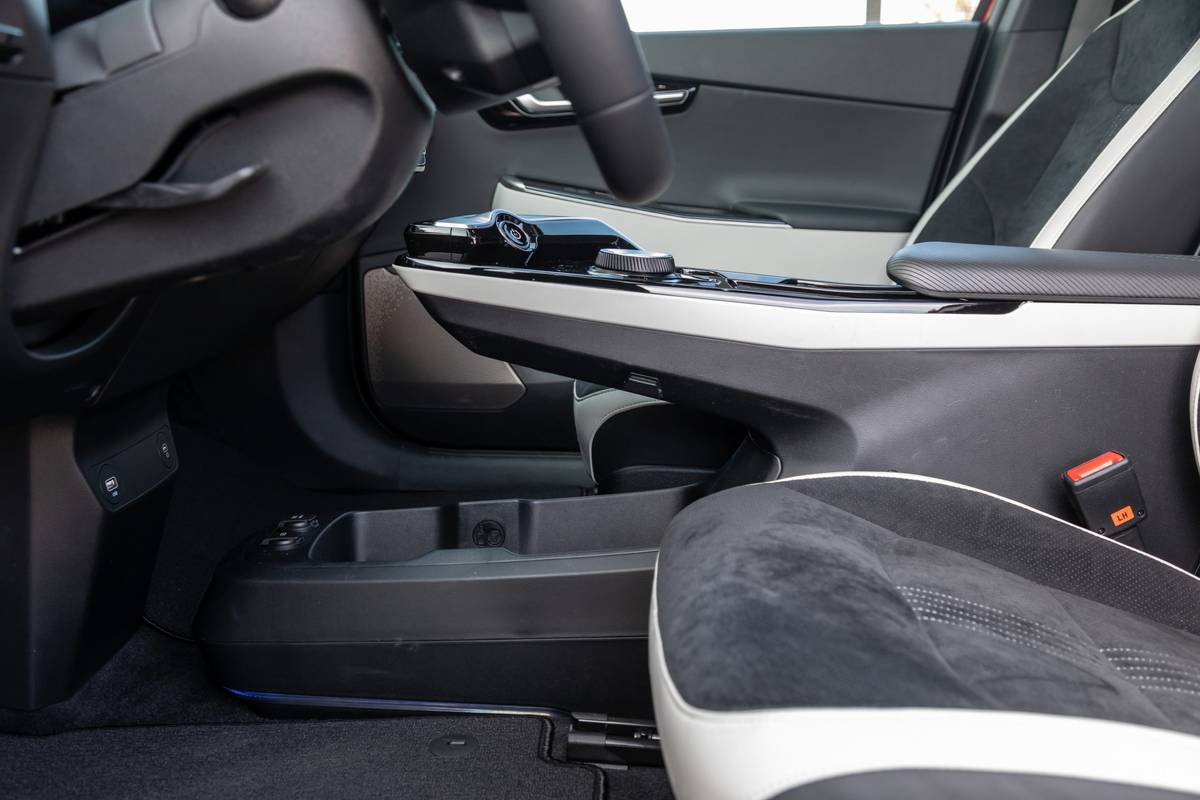
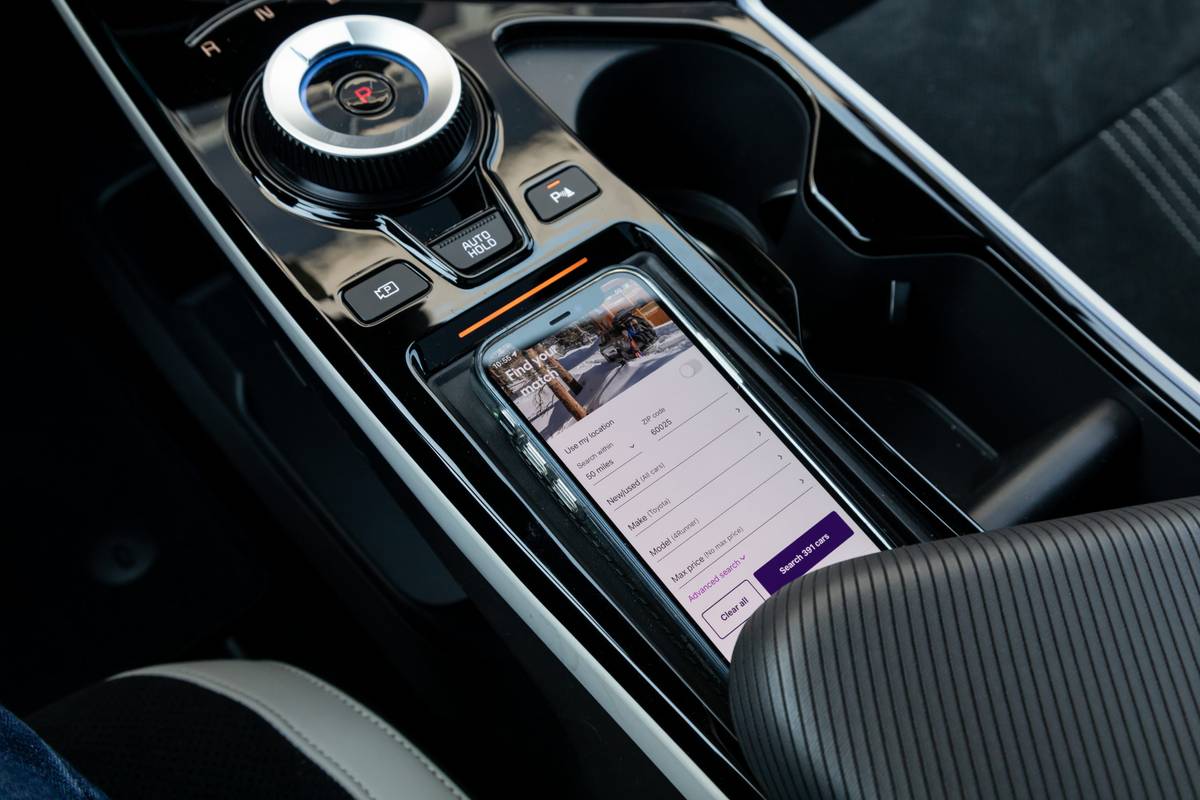
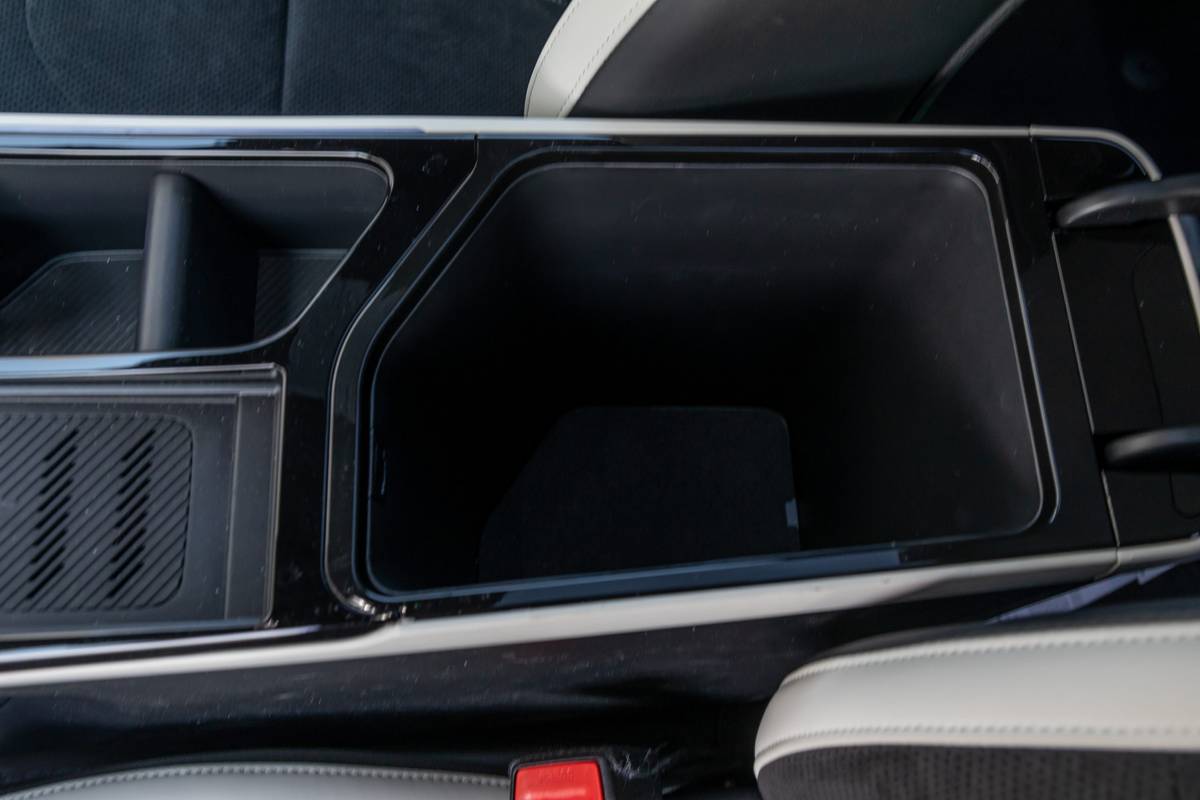
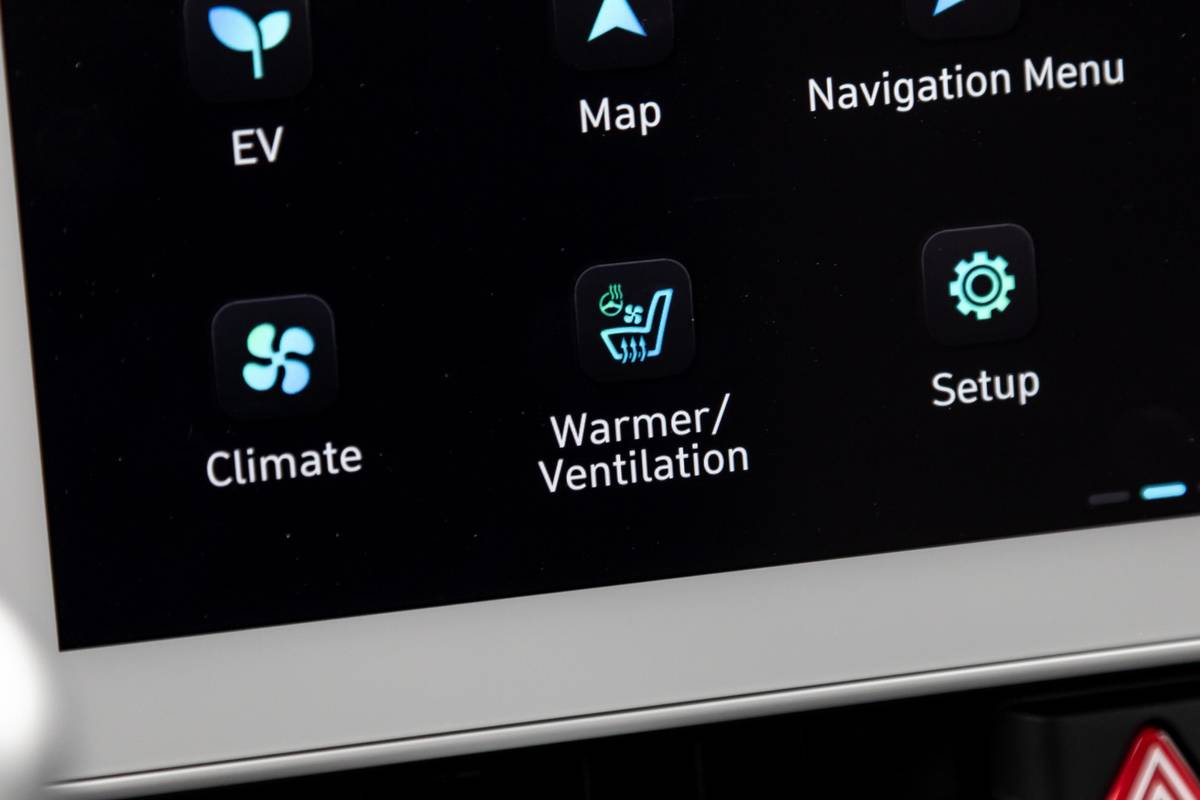
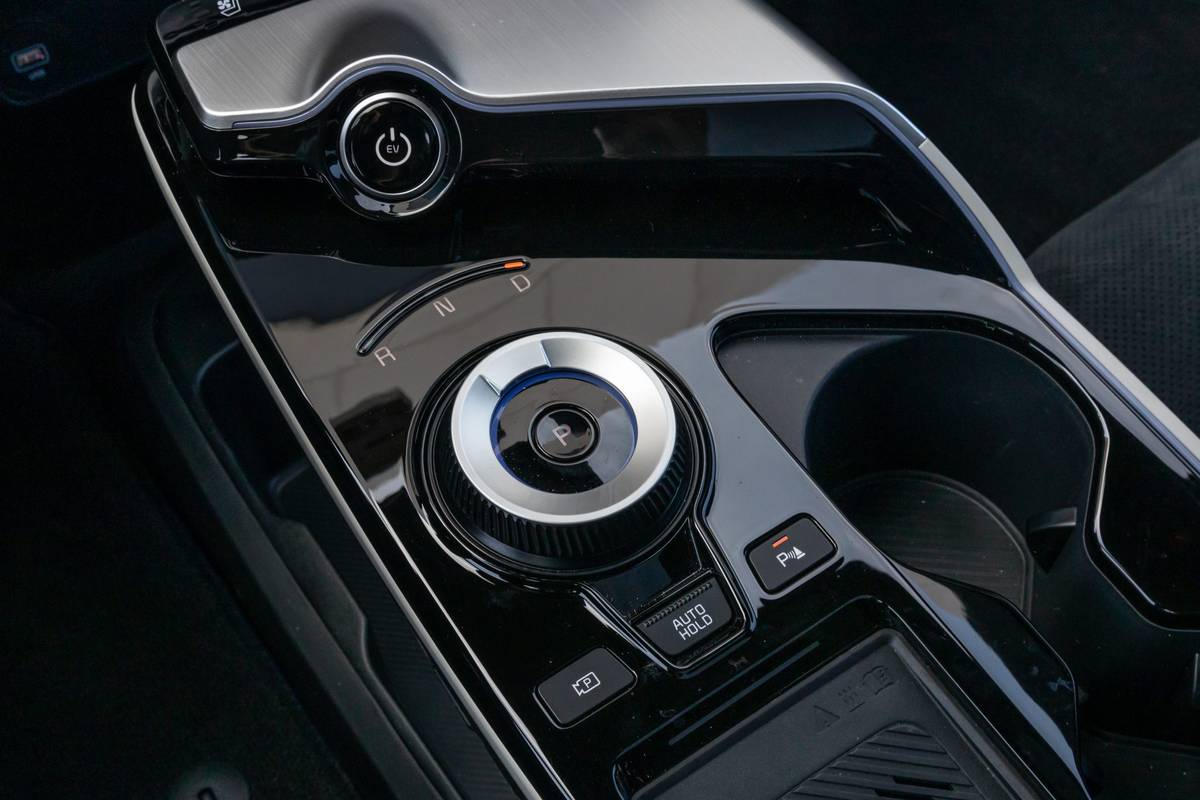














Center Console
Technically, both models have center consoles, but the Ioniq 5’s is relatively low and far back with a tilt-up center armrest. In the Limited trim level, it slides back as well. This design combines with the flat floor to provide an especially open, roomy space between the seats for purses, backpacks, etc. The EV6 also leaves some of this lower space open for stowage but retains a console above it that extends toward the dashboard bearing the “gear” selector, cupholders, the car’s on-off button and other important high-level controls like the available 360-degree camera system.
You need to pick what’s most important to you, but after finding the Ioniq 5’s heated seat and steering wheel controls buried in a touchscreen menu rather than accessible via top-level buttons, we greatly appreciated the latter on the front edge of the EV6’s console, even if they are finicky touch-sensitive buttons. Similarly, the EV6’s wireless smartphone charging pad is right where you can use the phone without picking it up; the Ioniq 5’s is down super low.
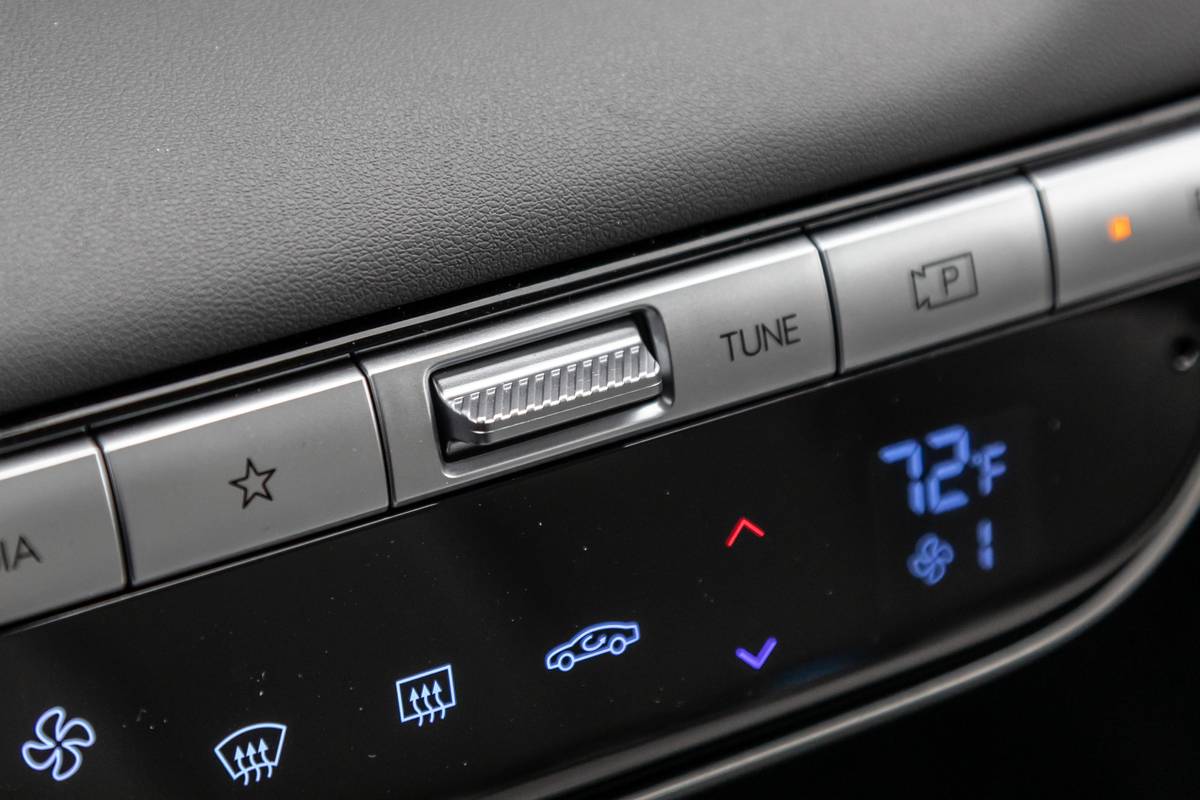
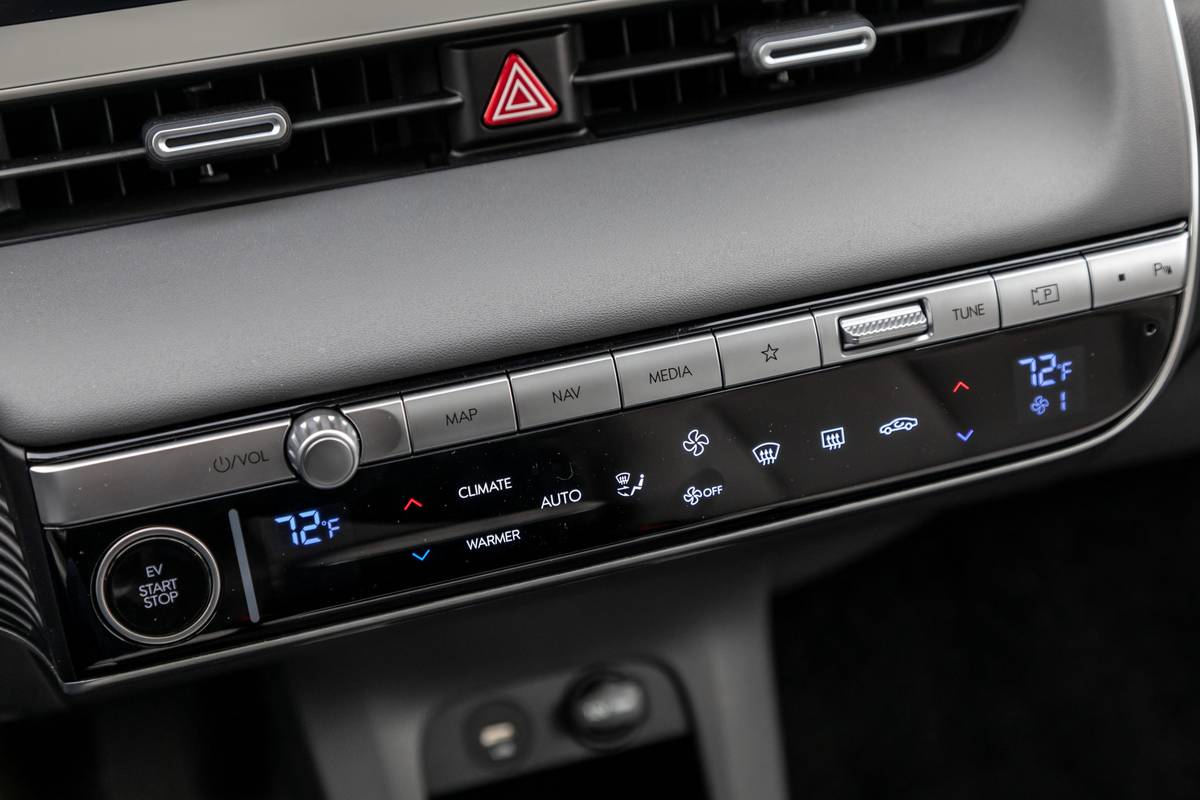
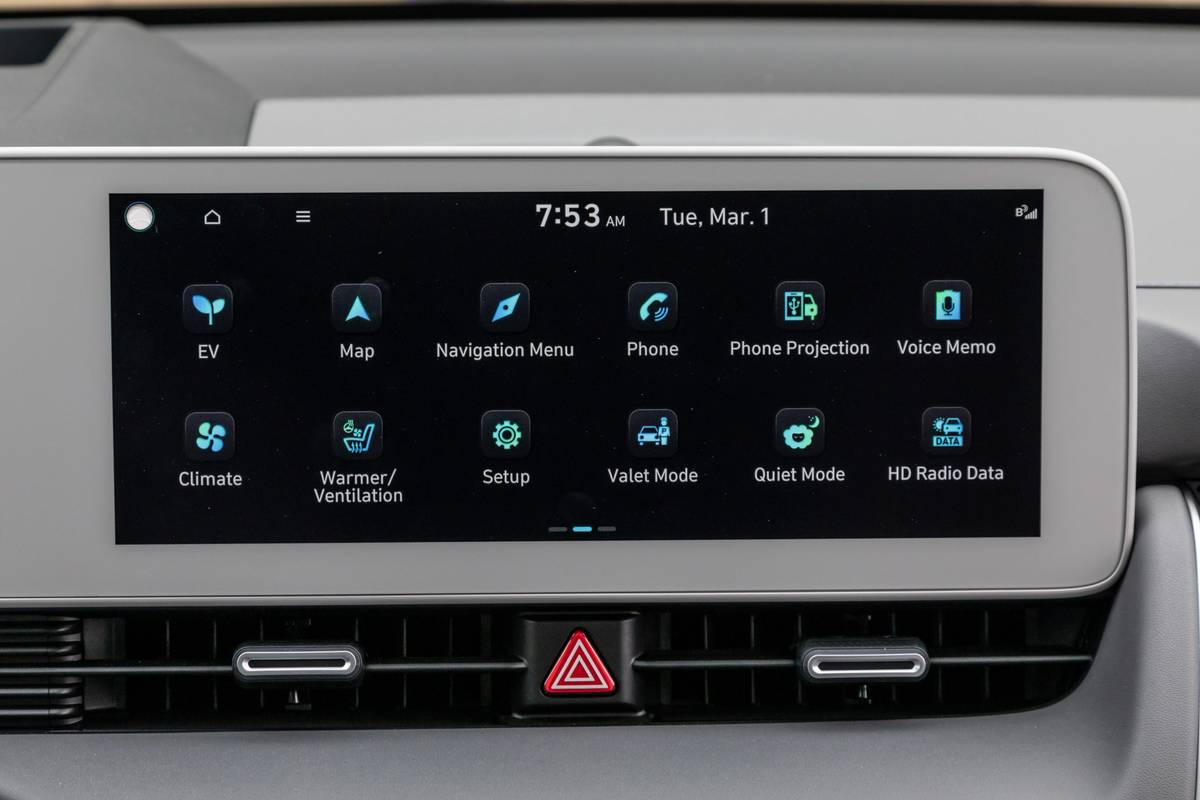
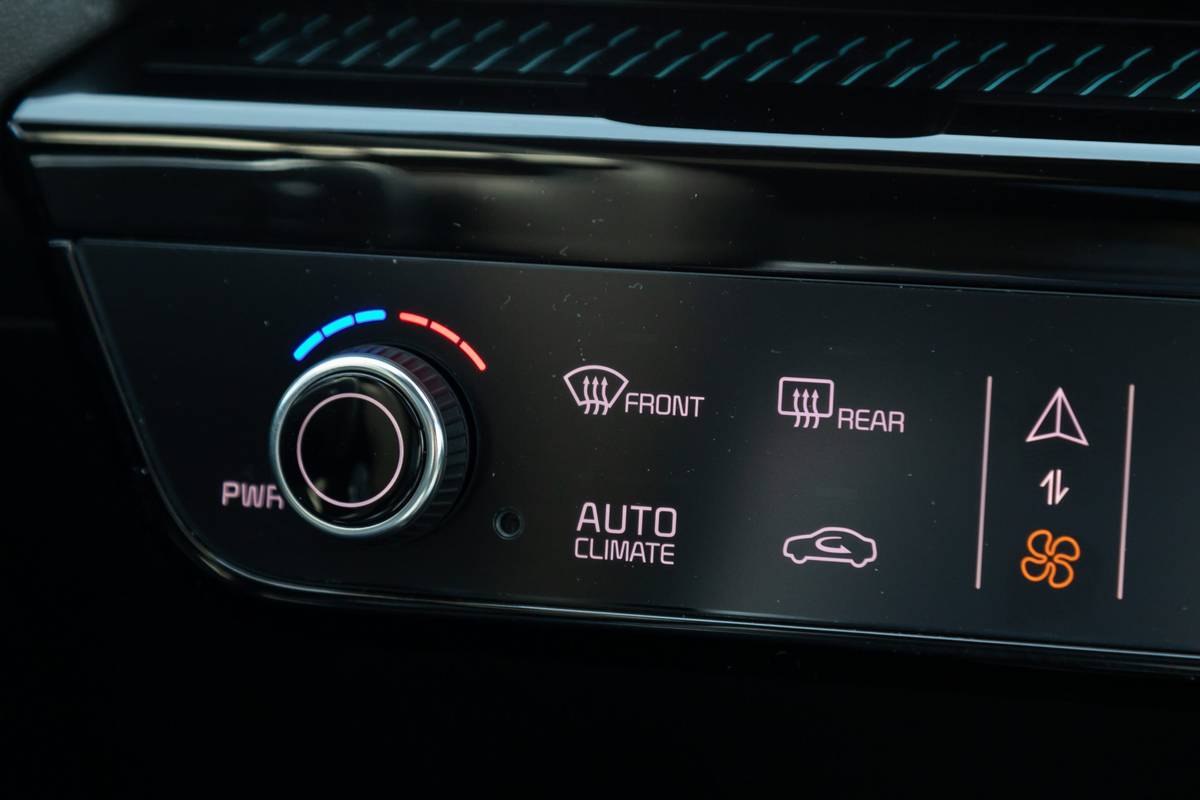
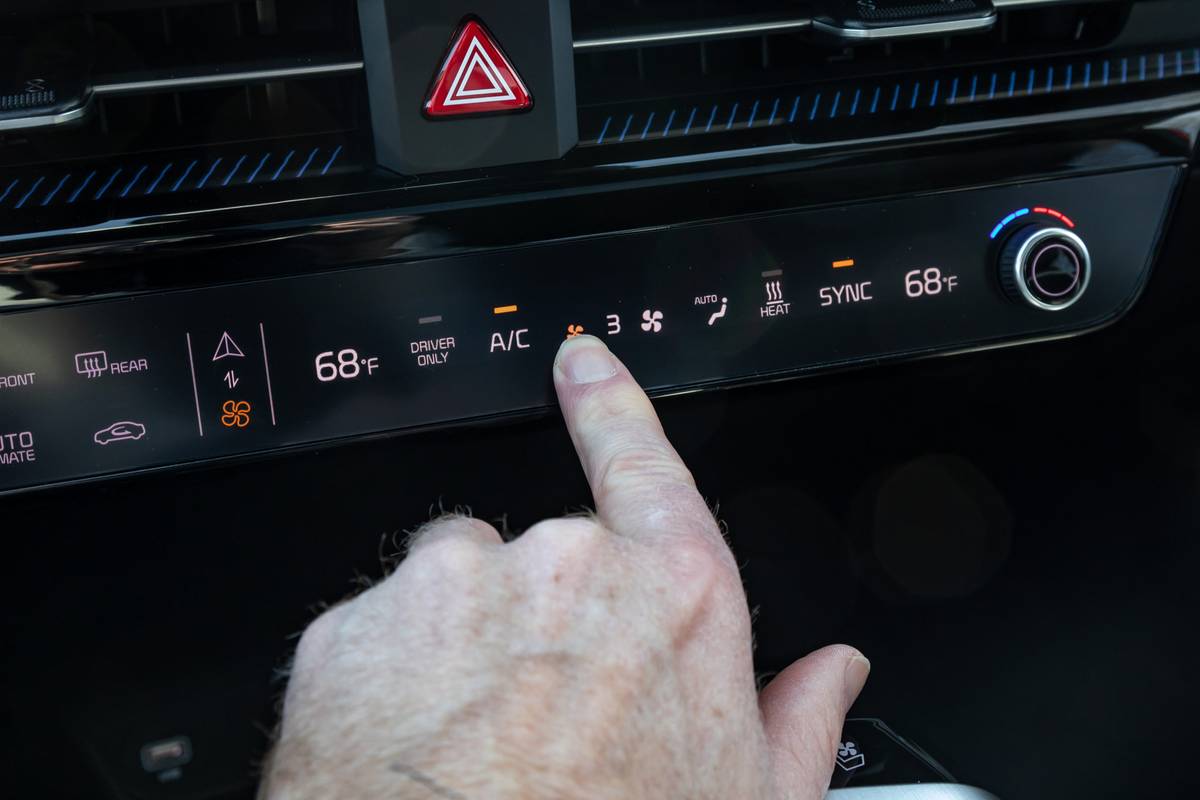
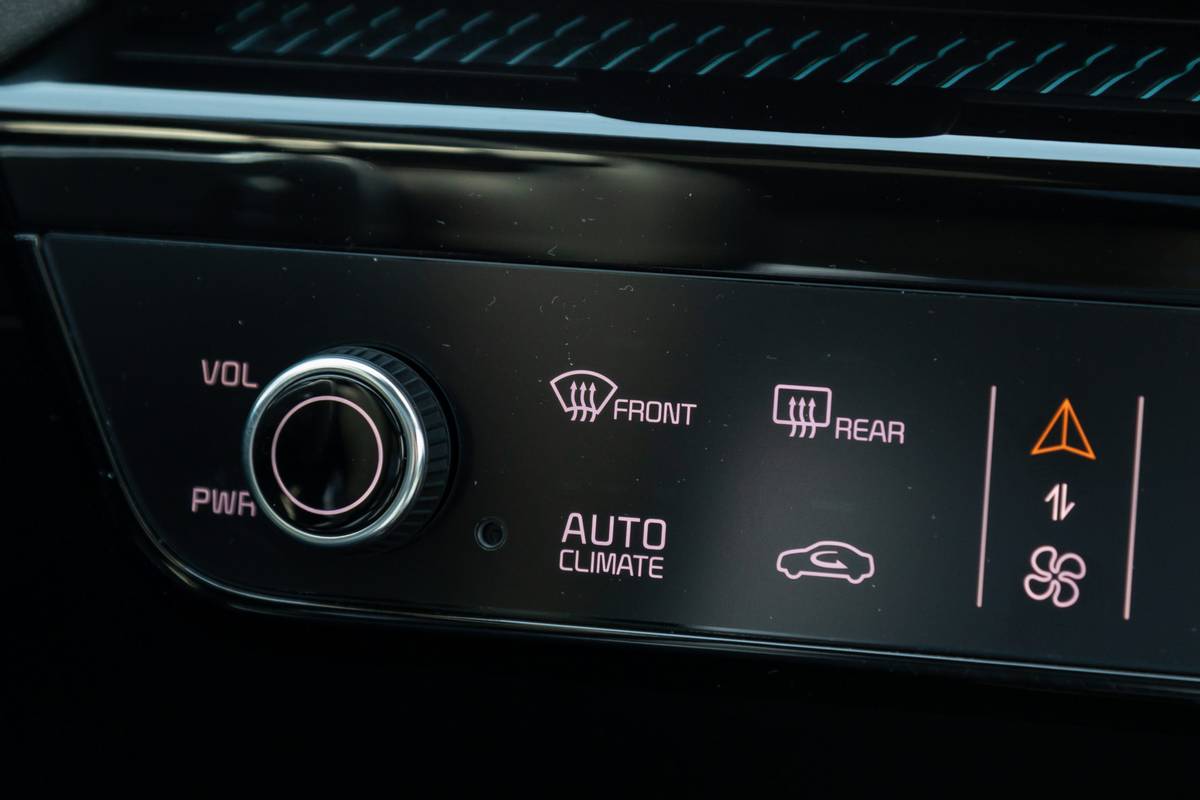
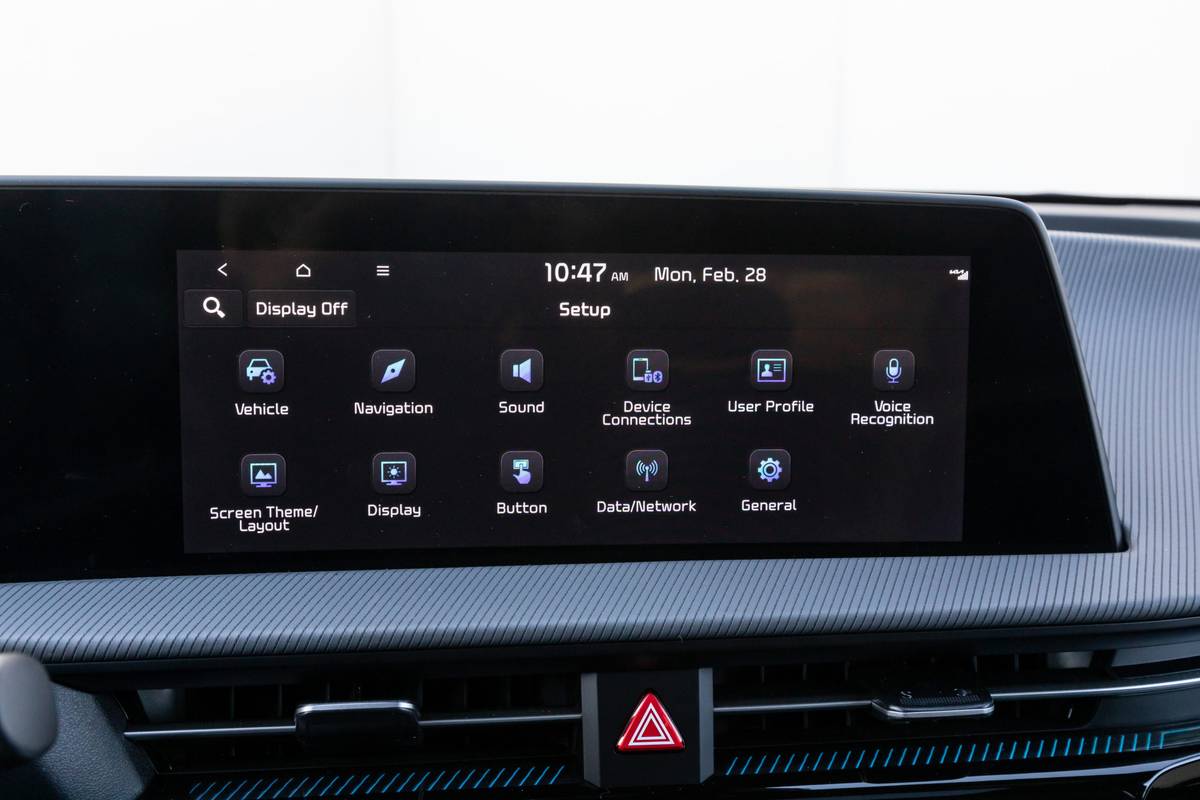







Tuning Knob or Toggle Switch
We Americans love our rotary volume and tuning knobs, and though both models have volume, only the EV6 has a tuning knob … some of the time. Where the Ioniq 5 has a toggle switch for tuning purposes, the EV6 has a nifty black panel that displays either media or ventilation controls. When the media controls are up, the rightmost knob serves a tuning function, but it becomes the passenger’s temperature dial in the other case. This one seems a wash to me, but some people are hardcore about tuning.
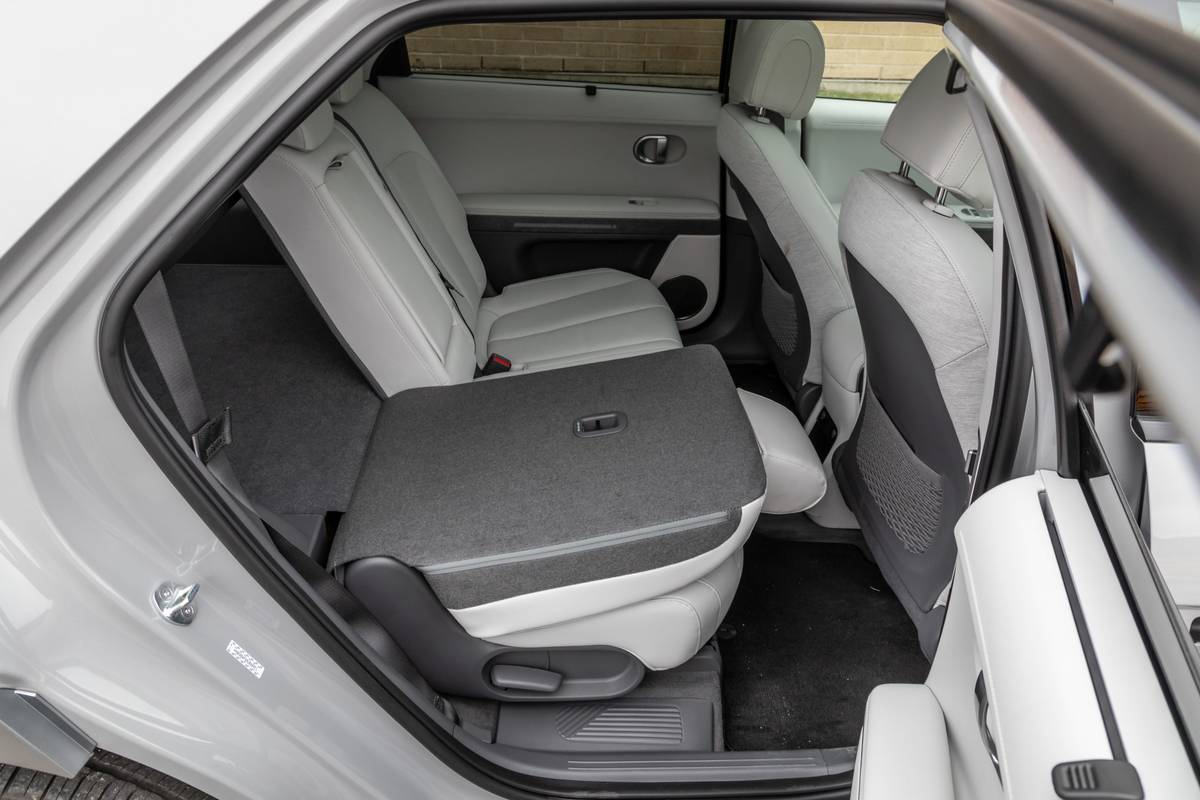
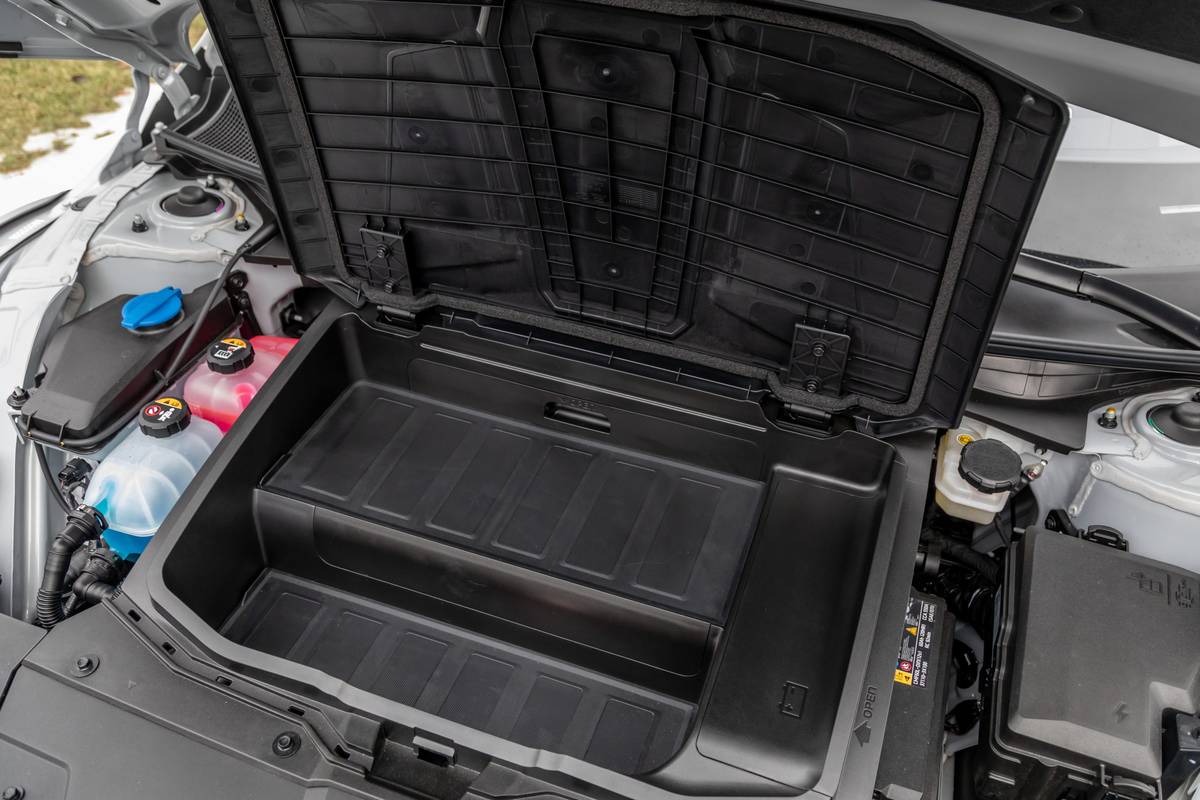
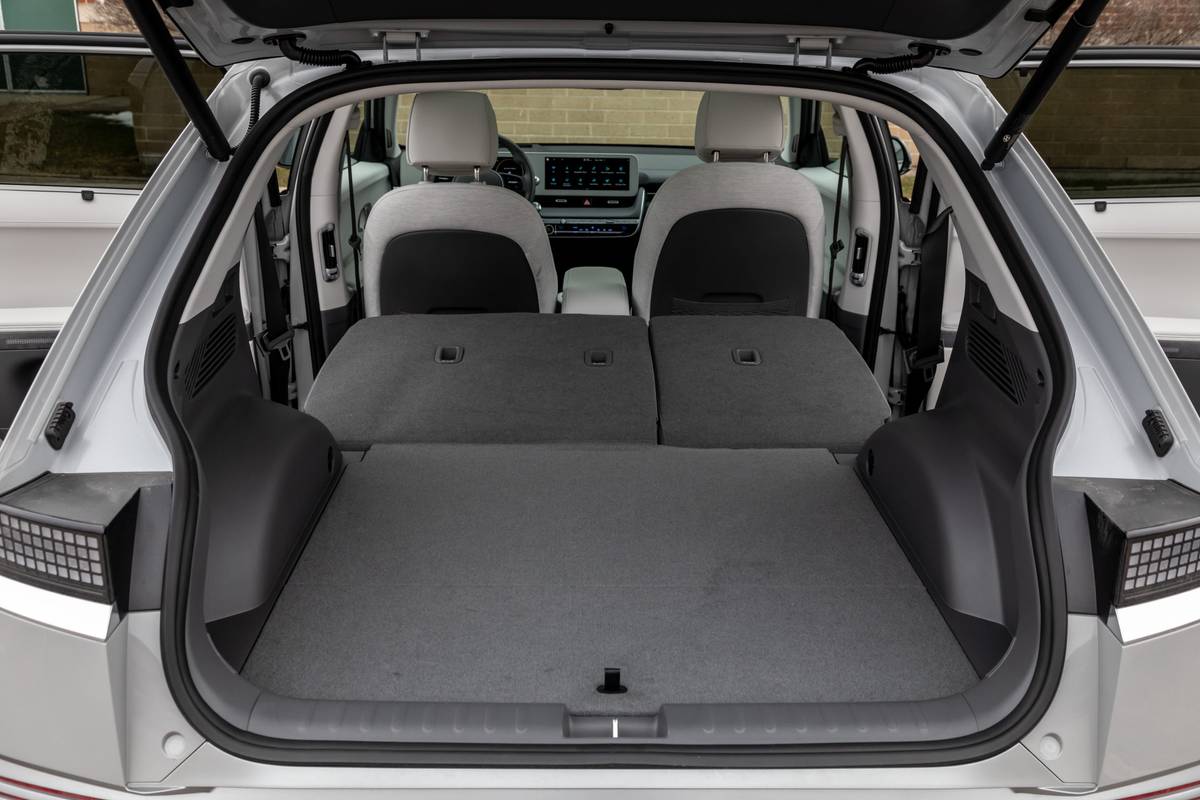
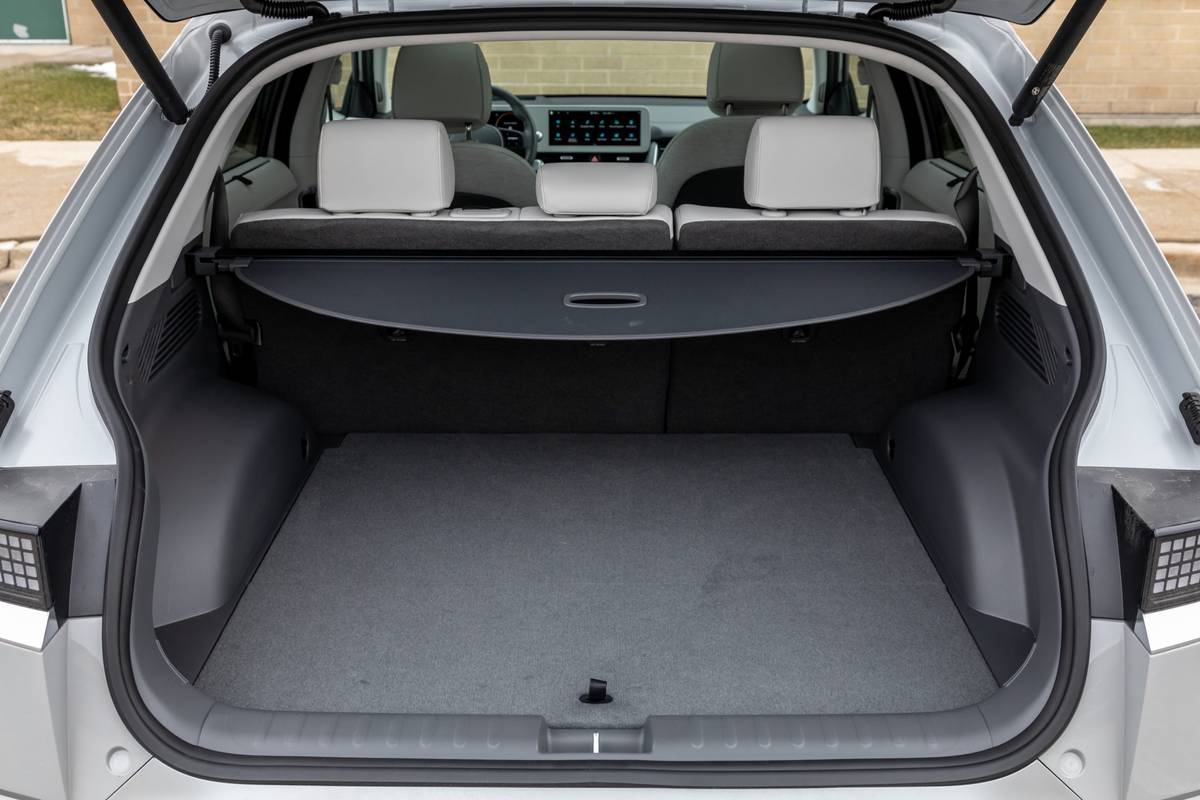
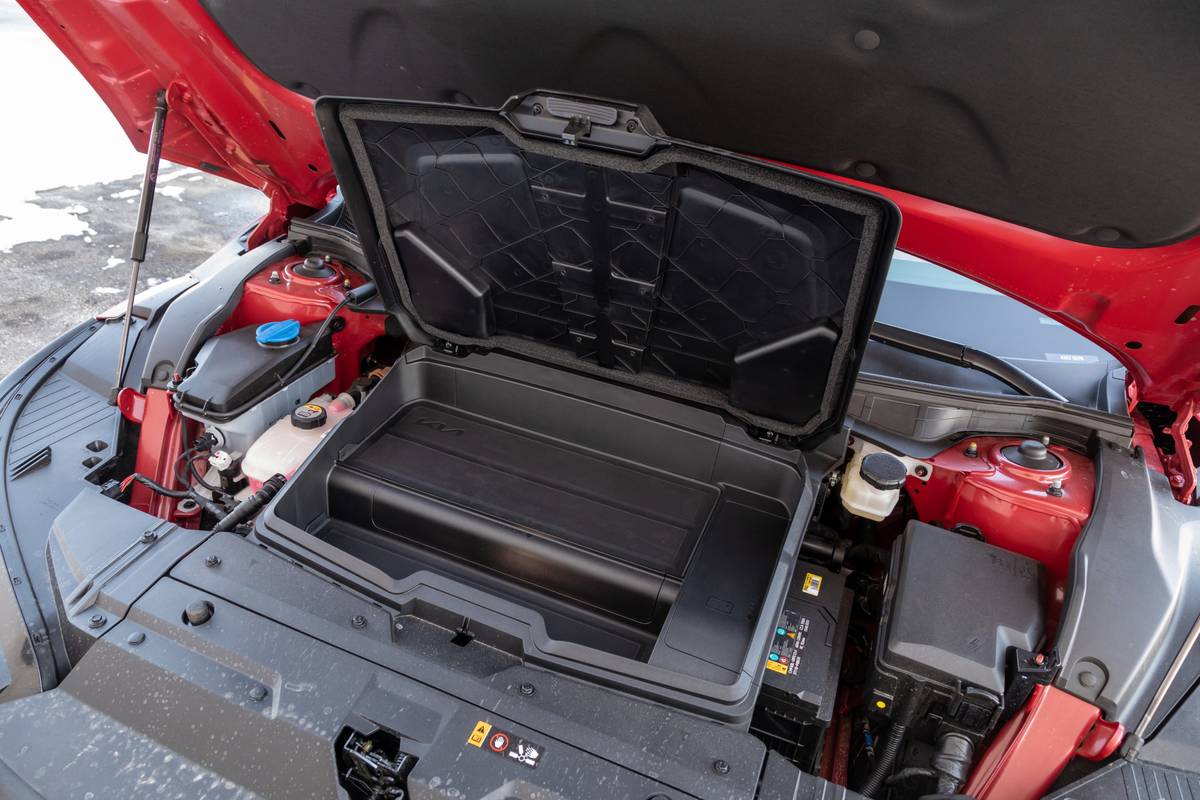
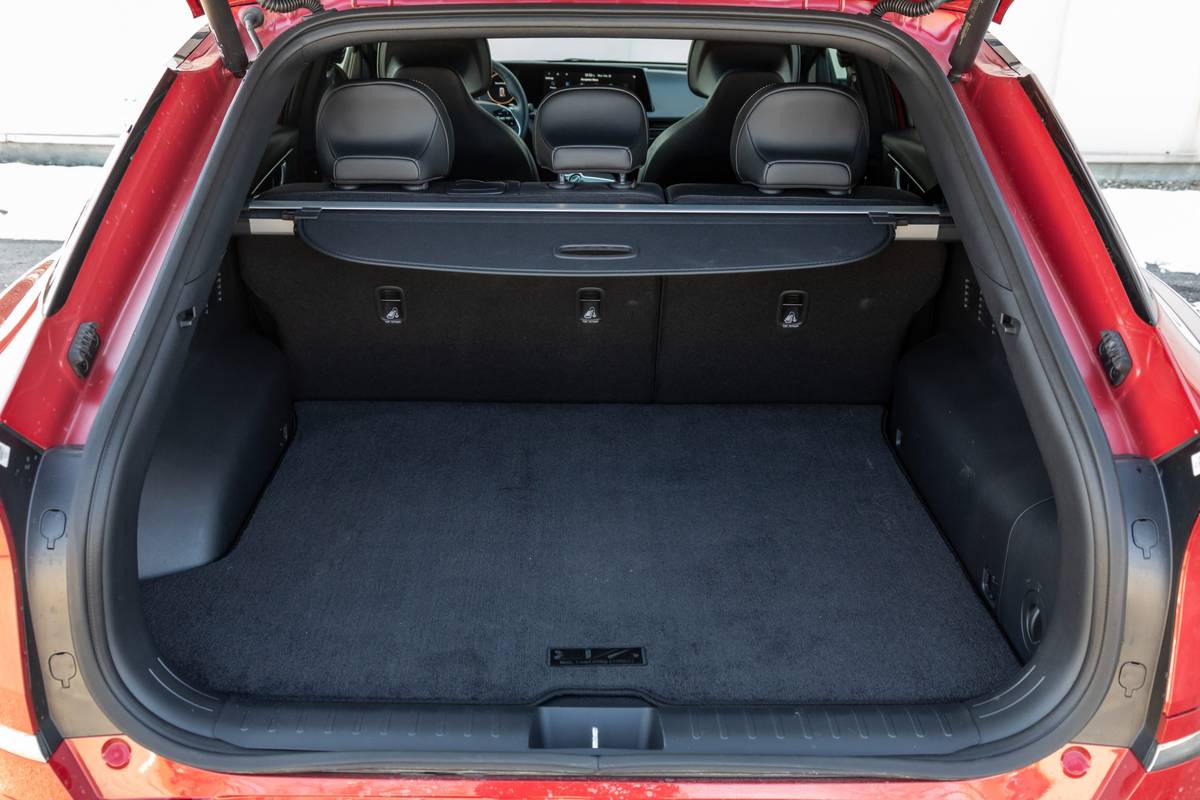
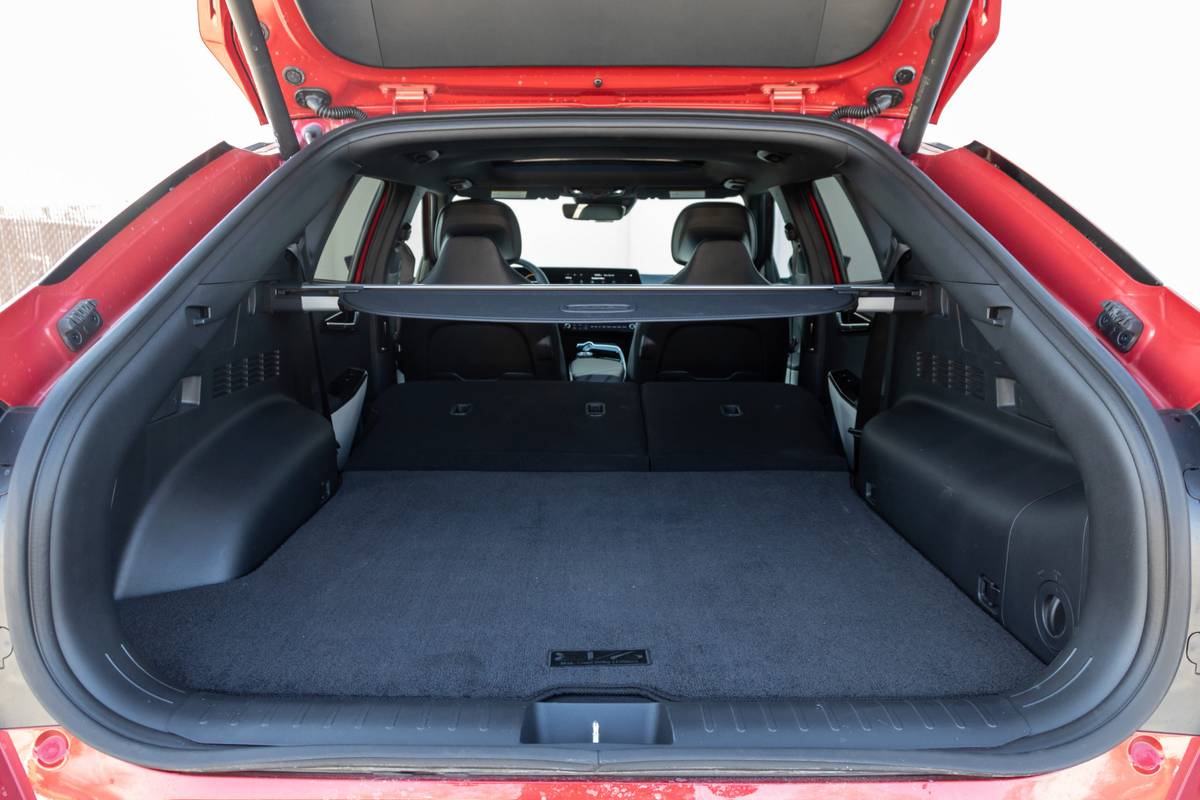
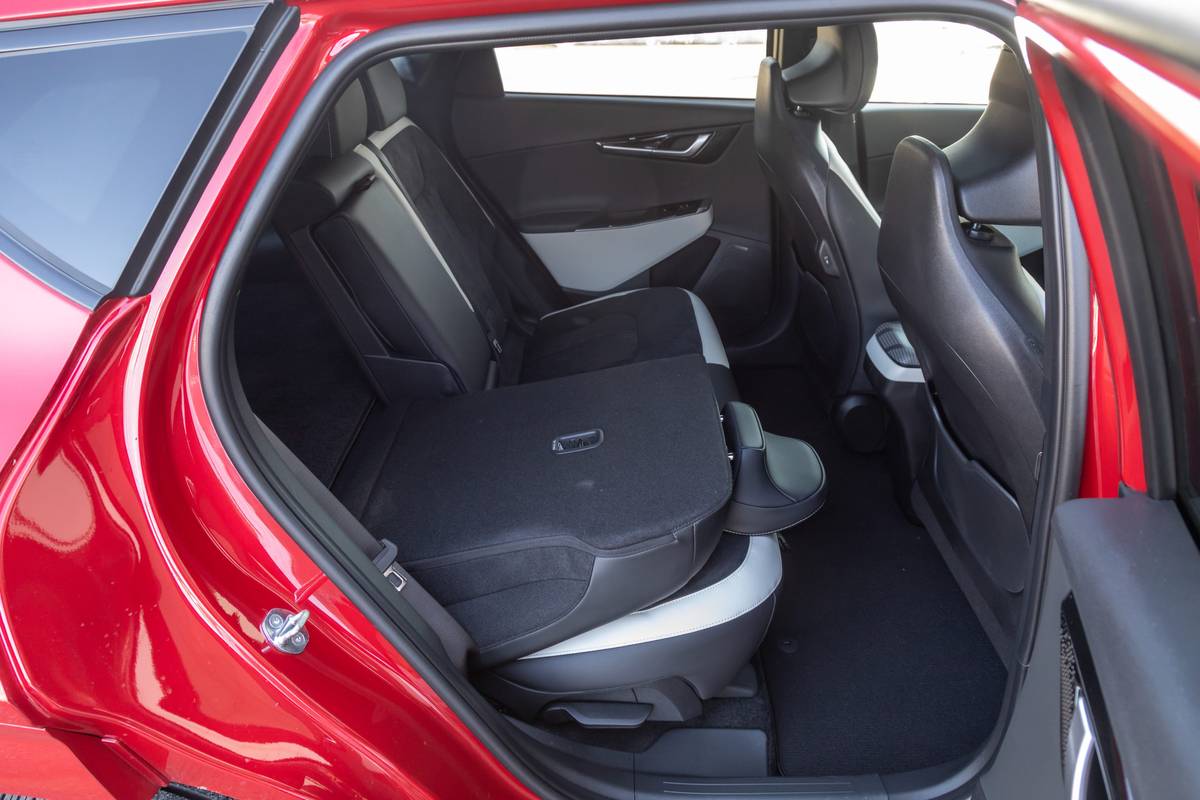








Cargo
By our measurements, the EV6 has 17.7 cubic feet of space behind its backseat, while the Ioniq 5 has 19.1 cubic feet, and though both models have split, folding rear seats, the Ioniq 5’s also slides to put the space where you want it most: in the cabin or the cargo area. The measurement cited is with the Hyundai’s seats all the way back, so you can get even more volume. The storage boxes under each model’s hood are barely large enough to mention and can’t be called proper frunks, but the Ioniq 5’s seems a touch larger.
650-Pound Difference in Towing Capacity
The sizable difference in towing capacity favors the EV6 at a rated 2,300 pounds (all ratings are for trailers with brakes), which is more in line with the ID.4’s 2,200 pounds with RWD, though the AWD version jumps to 2,700 pounds. The Ioniq 5, with its 1,650-pound rating, is in the less useful category but is still above the Ford Mustang Mach-E, which isn’t rated for towing.
Visibility
Typical of swoopy, sporty looking vehicles with low rooflines, the EV6 has compromised outward visibility, especially to the rear. The view over the driver’s left shoulder is particularly bad, obscured by a broad B-pillar close to your face. Though its A-pillars can block one’s front-corner views, typical of aerodynamic vehicles, the Ioniq 5’s sightlines are better overall. Fortunately, both models offer a bevy of tech remedies to help with these issues, though the more advanced ones are on higher trim levels only, and both vehicles lack a rear window wiper.
DC Fast Charging: Choose Your Limit
Both models offer free DC fast charging to the original buyer at Electrify America charging stations, limited in different ways. The Ioniq 5 gives you as many 30-minute sessions (and 60-minute Level 2 sessions) as you can squeeze into two years’ time (with a 60-minute waiting period between sessions). The EV6 gives you three years but limits the juice to 1,000 kWh, which has a current dollar value of $430. The Hyundai might have the advantage here.
Warranty
Both brands beat the pants off most of the market, but Hyundai edges out Kia with no mileage limit on its five-year roadside assistance; the EV6 runs out after 100,000 miles. The Ioniq 5 also has perforation coverage for seven years and unlimited miles versus the EV6’s five years and 100,000 miles.
Shoppers who appreciate the following might lean toward the Hyundai Ioniq 5:
-
- More open space in front
- Better headroom
- More comfortable legroom
- Better rearward visibility
- More cargo space
- The potential for more free public charging
- Panoramic glass roof (Limited trim only)
- No mileage limit for roadside assistance or perforation coverage
- Longer perforation warranty
- Actor Jason Bateman
Shoppers who appreciate the following might lean toward the Kia EV6:
-
- Lower starting price (if the Light trim level arrives)
- Higher efficiency
- Slightly higher range
- Better controls
- Top-level buttons for heated seats and steering wheel
- A rotary tuning knob
- Wireless smartphone charging pad within easy reach
- Higher towing capacity
- A moonroof that opens (GT-Line trim only)
- Robotic dogs
Related Video:
More From Cars.com:
Cars.com’s Editorial department is your source for automotive news and reviews. In line with Cars.com’s long-standing ethics policy, editors and reviewers don’t accept gifts or free trips from automakers. The Editorial department is independent of Cars.com’s advertising, sales and sponsored content departments.

Former Executive Editor Joe Wiesenfelder, a Cars.com launch veteran, led the car evaluation effort. He owns a 1984 Mercedes 300D and a 2002 Mazda Miata SE.
Featured stories










